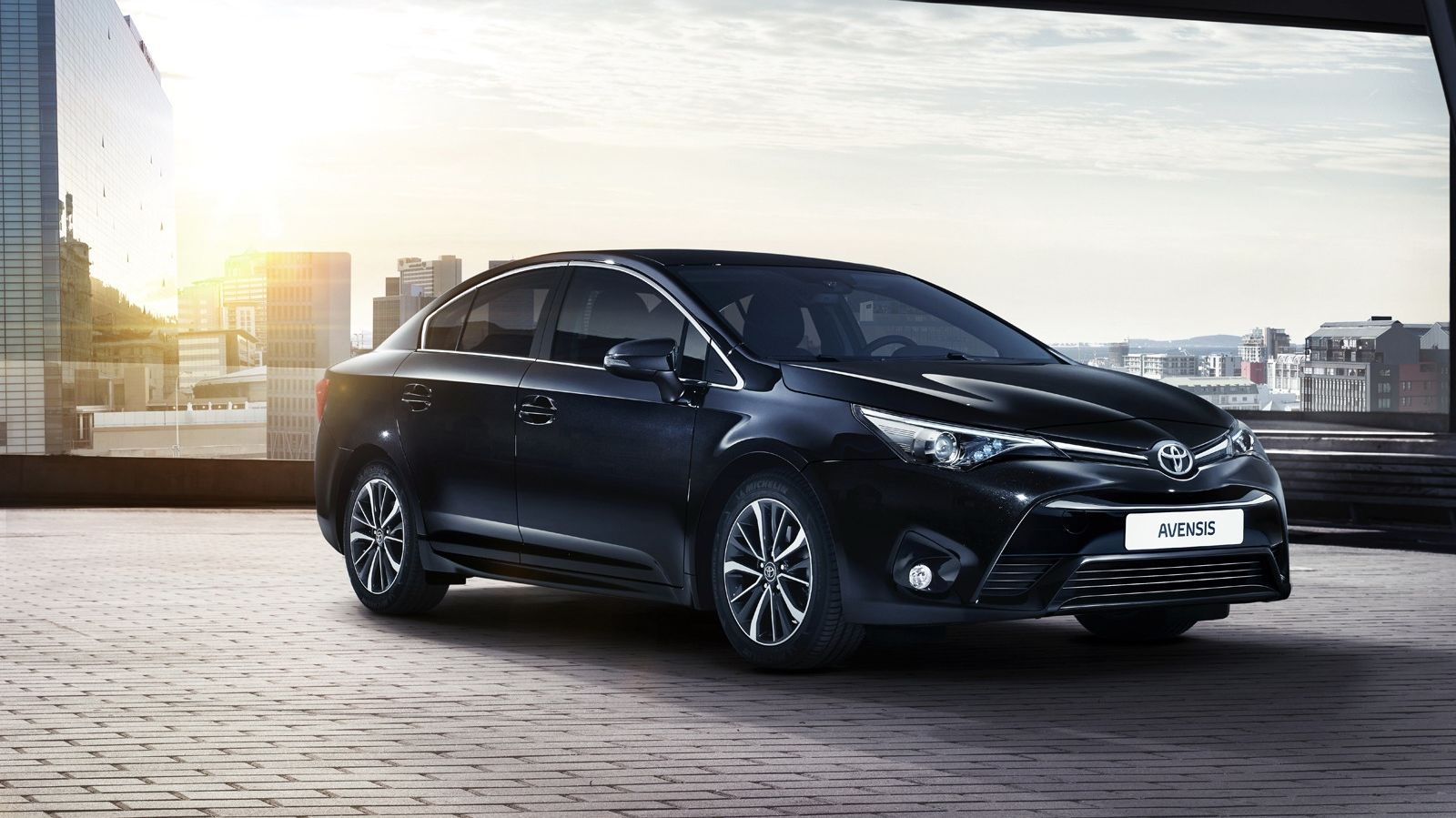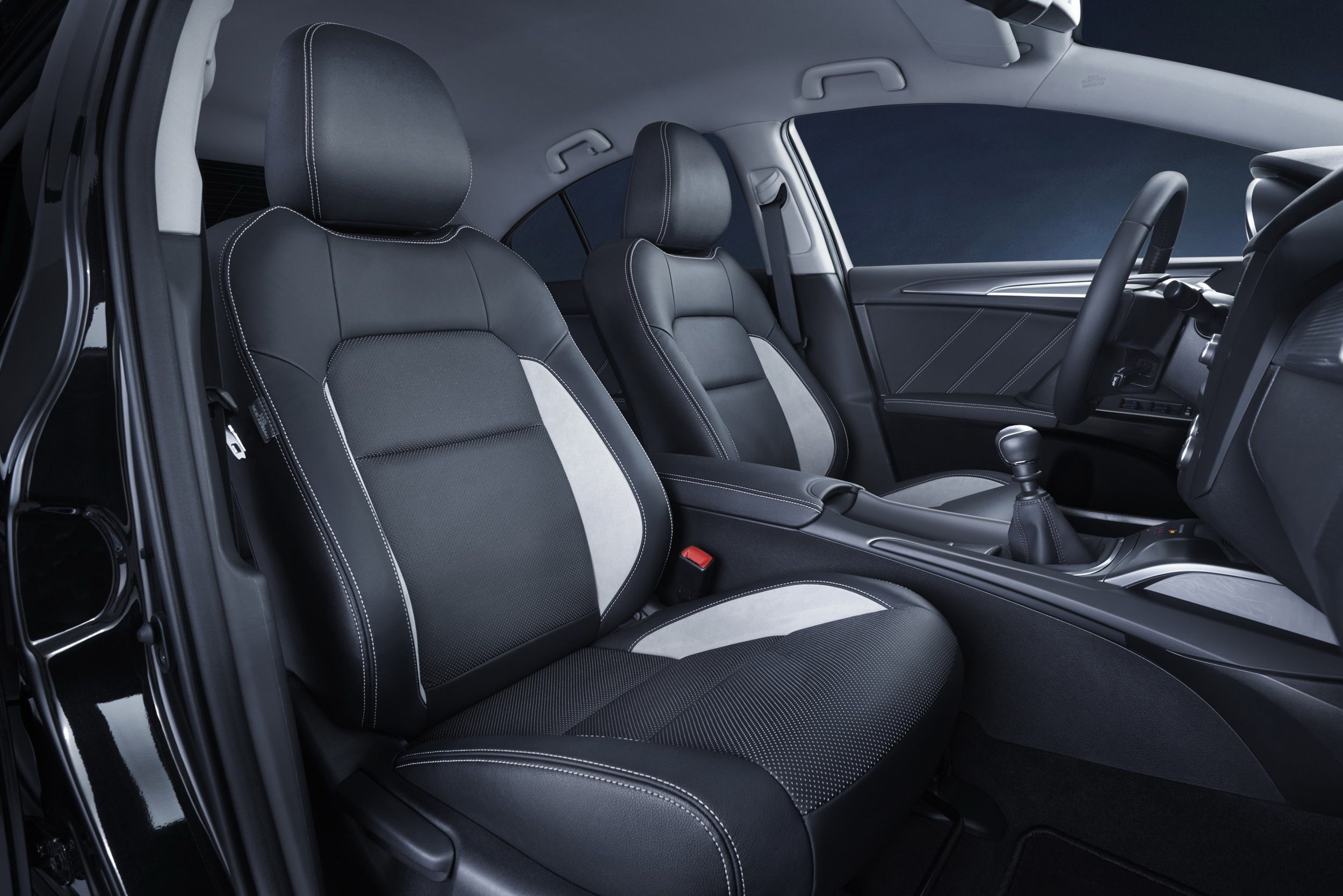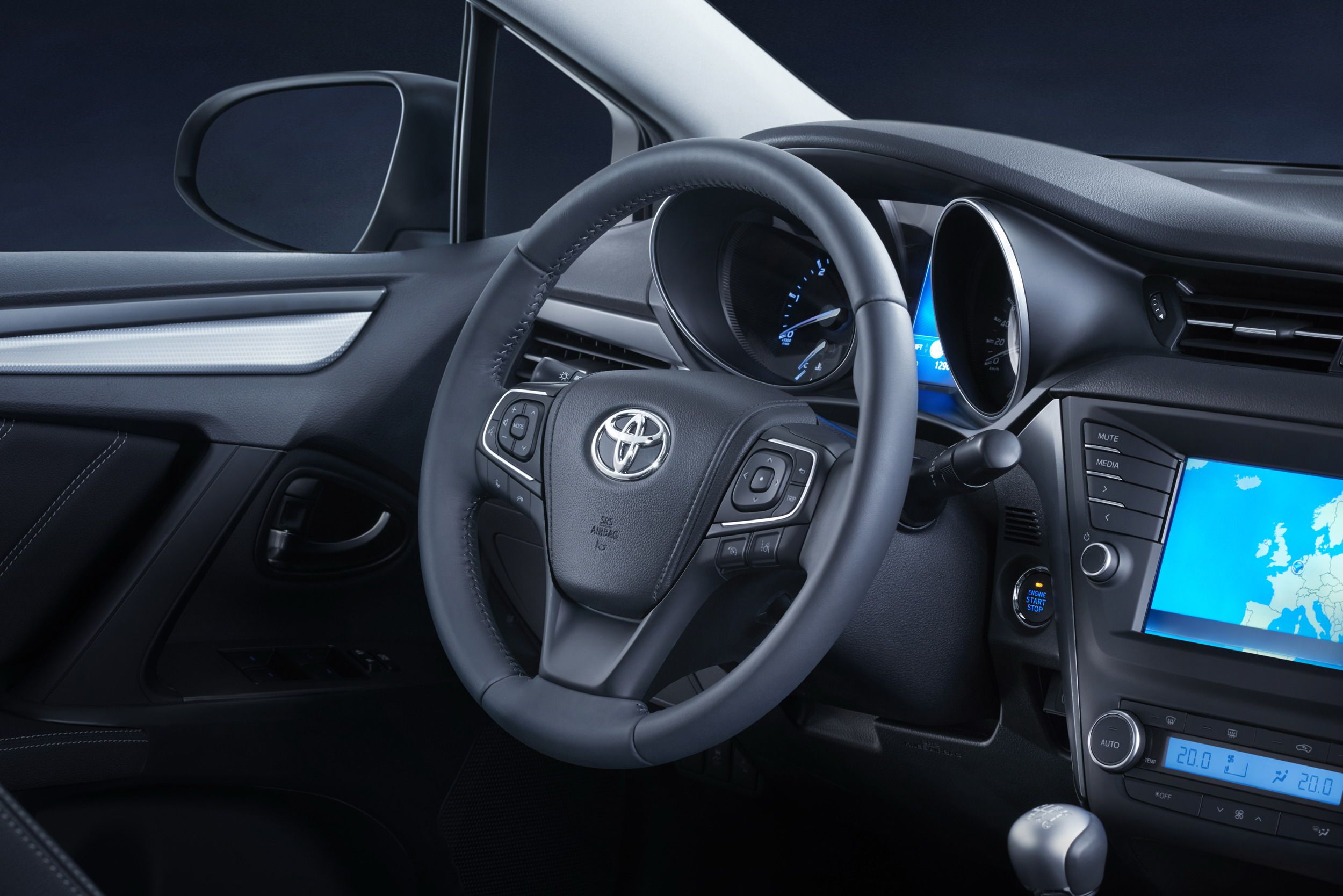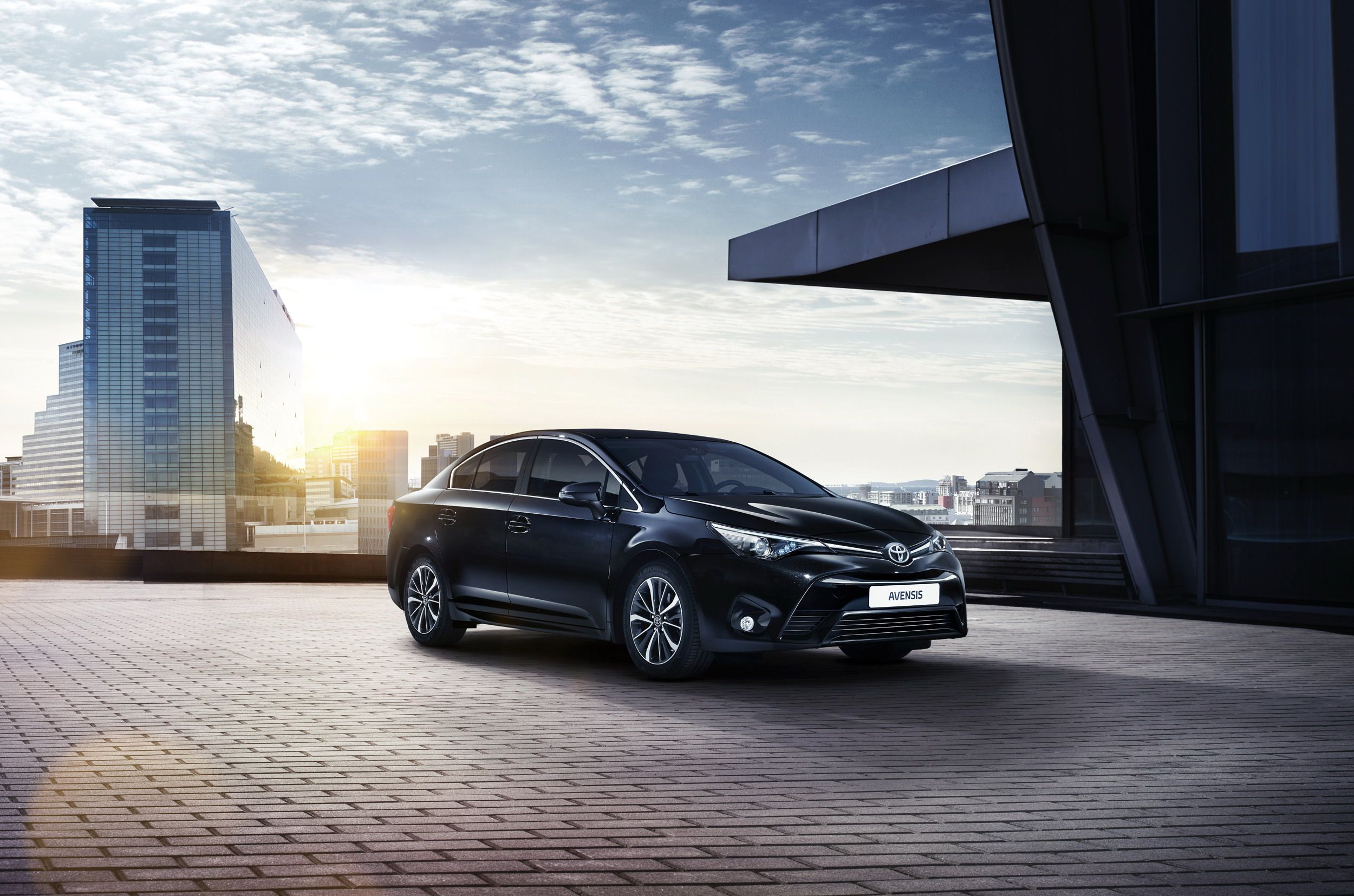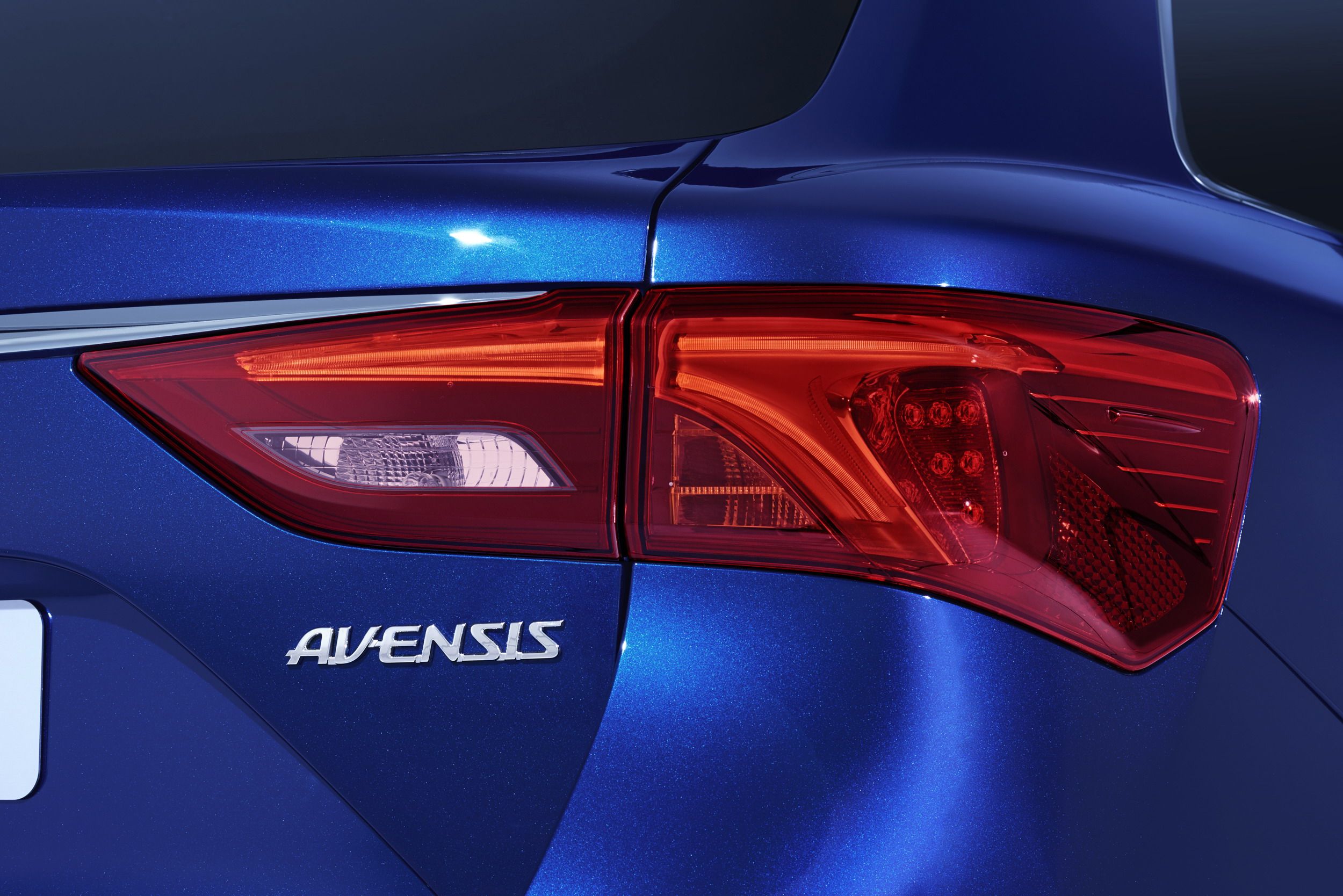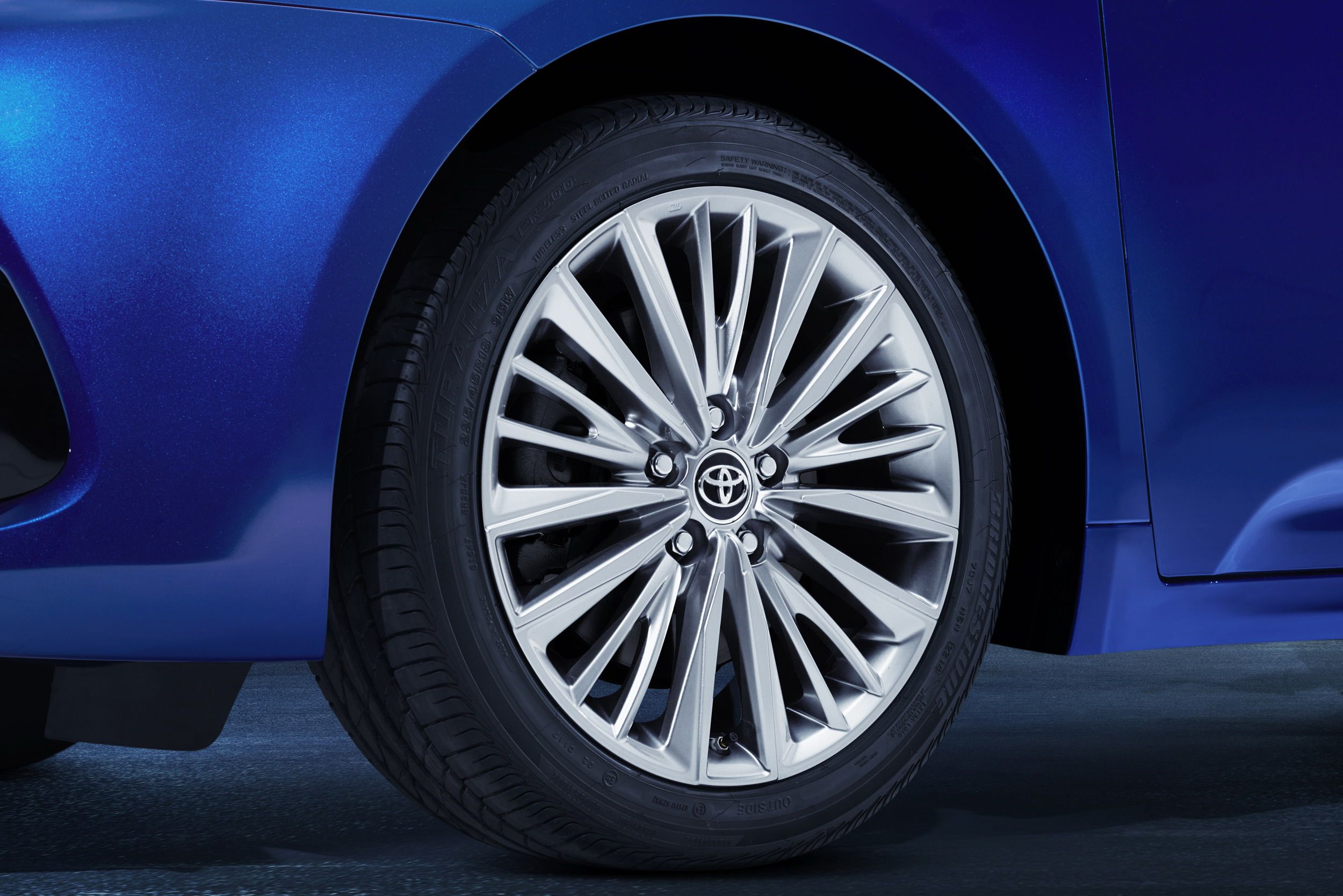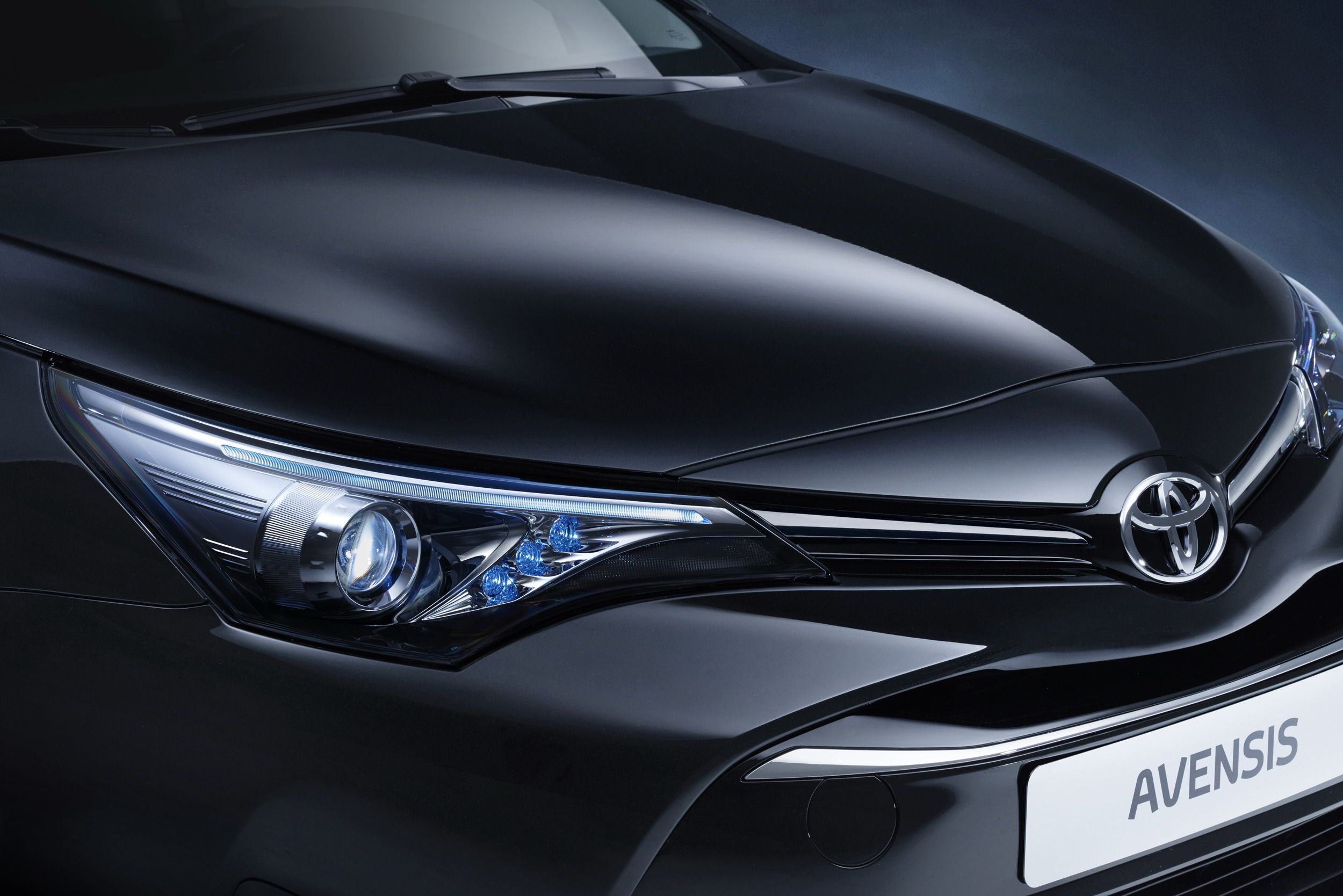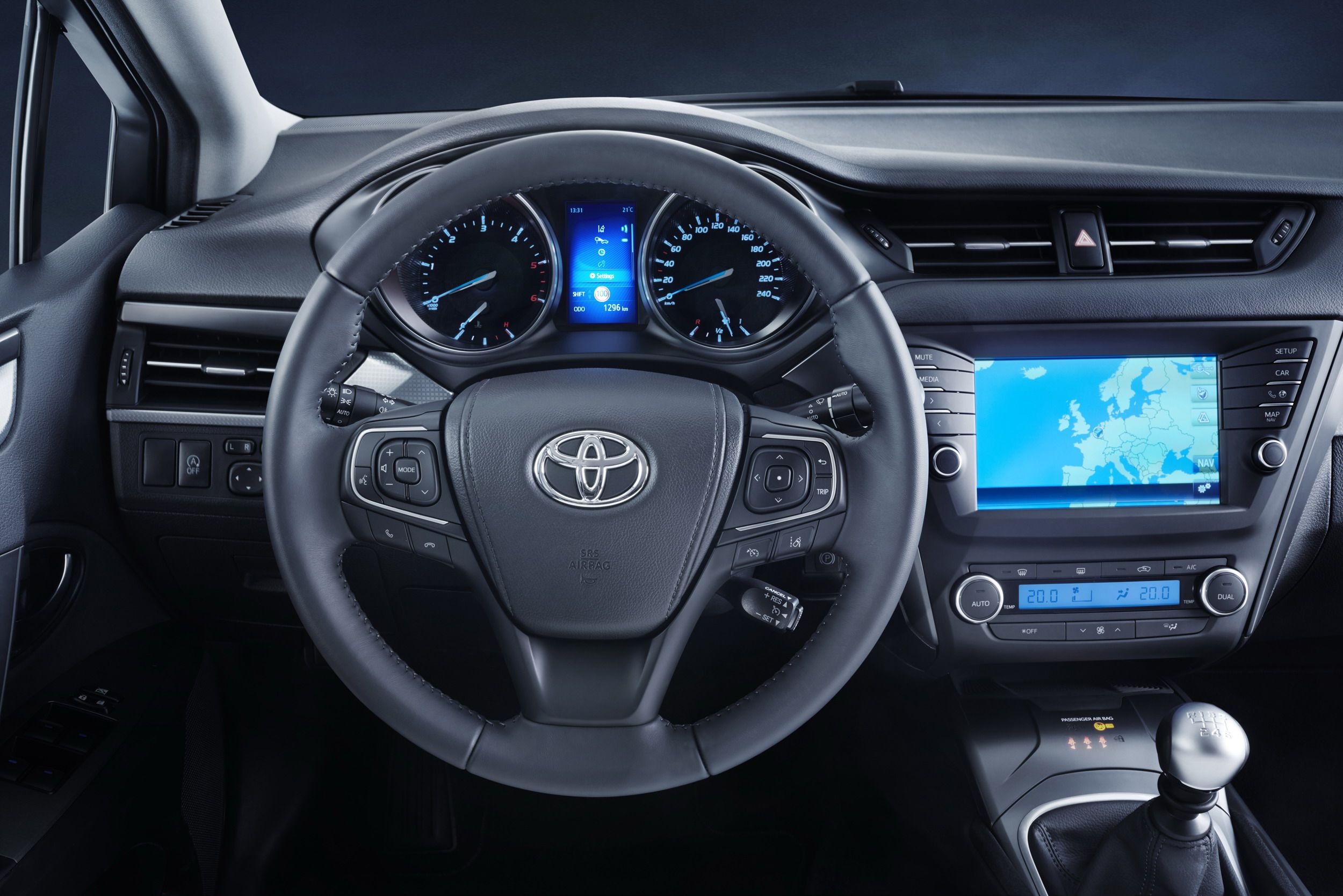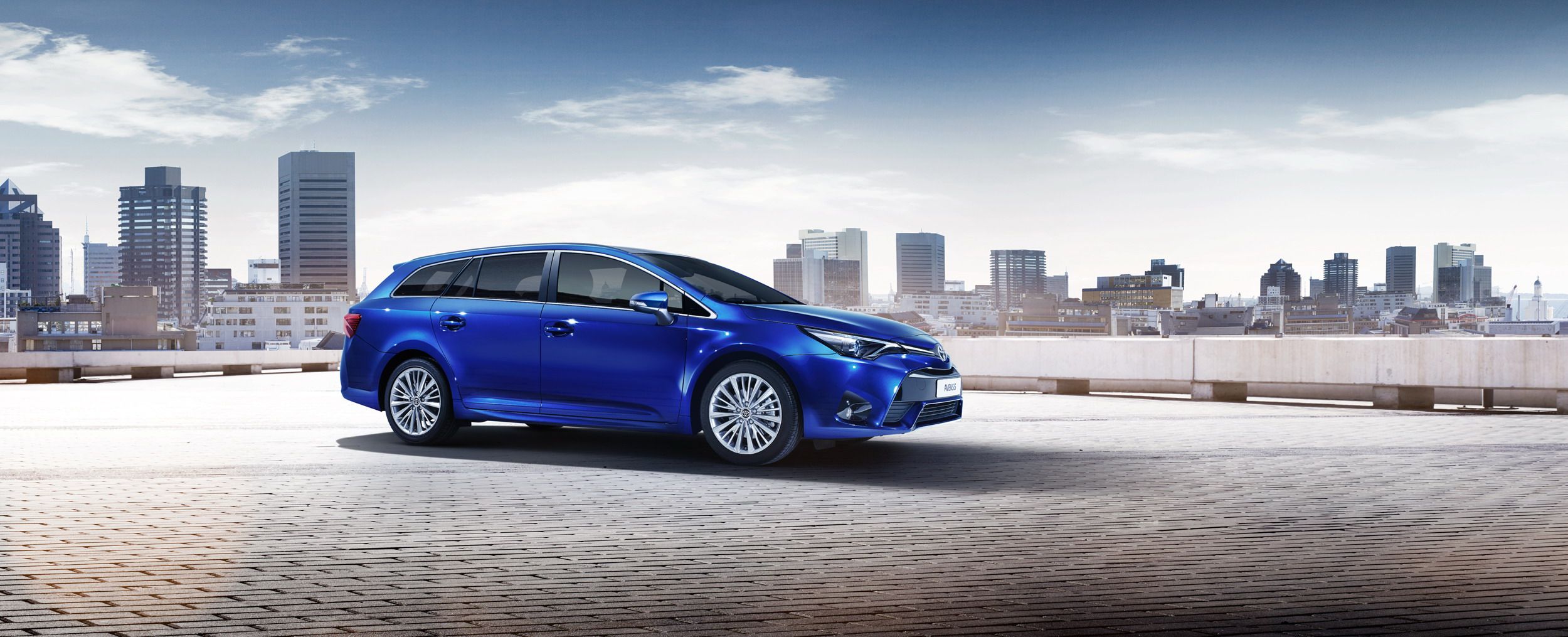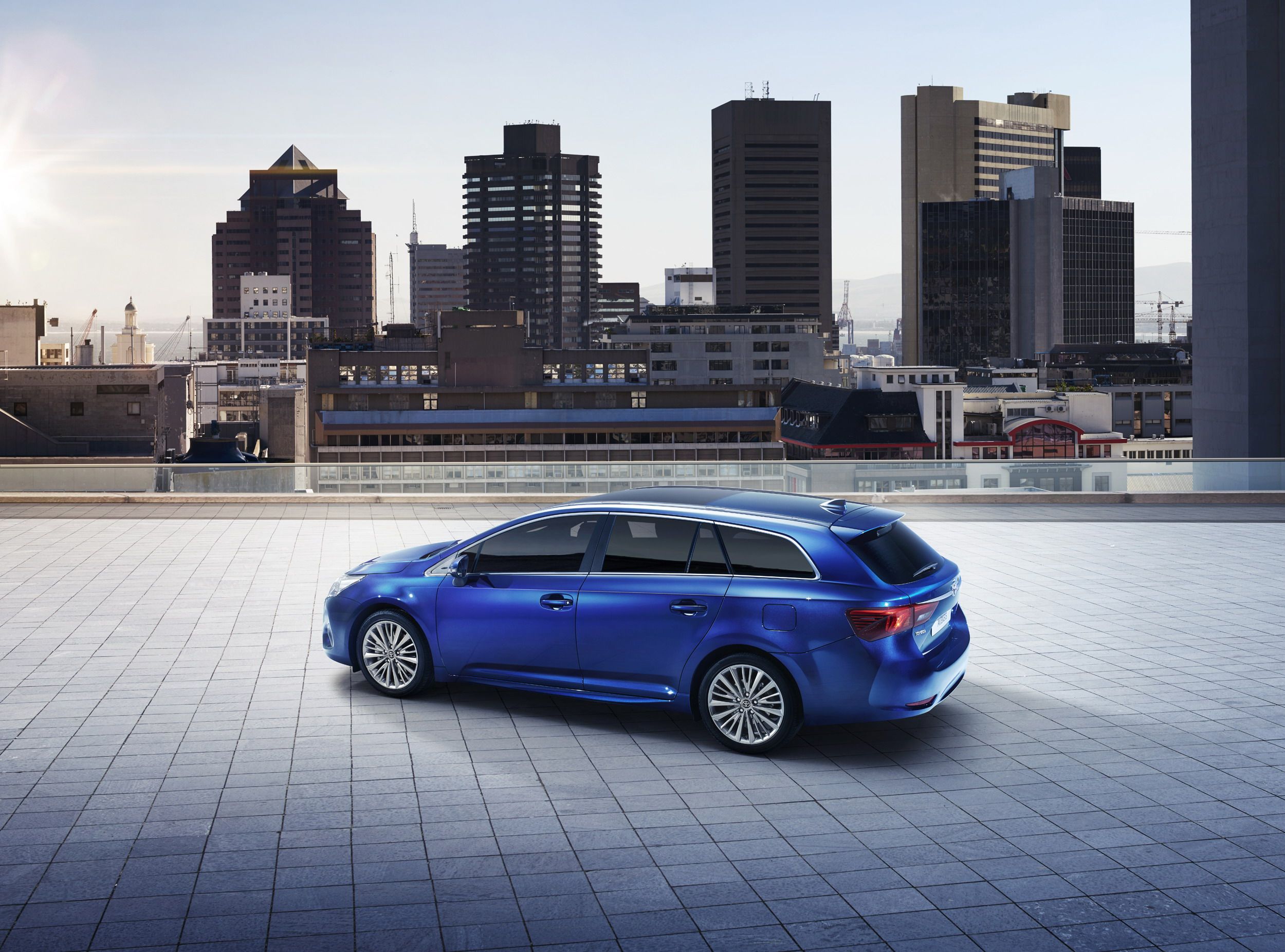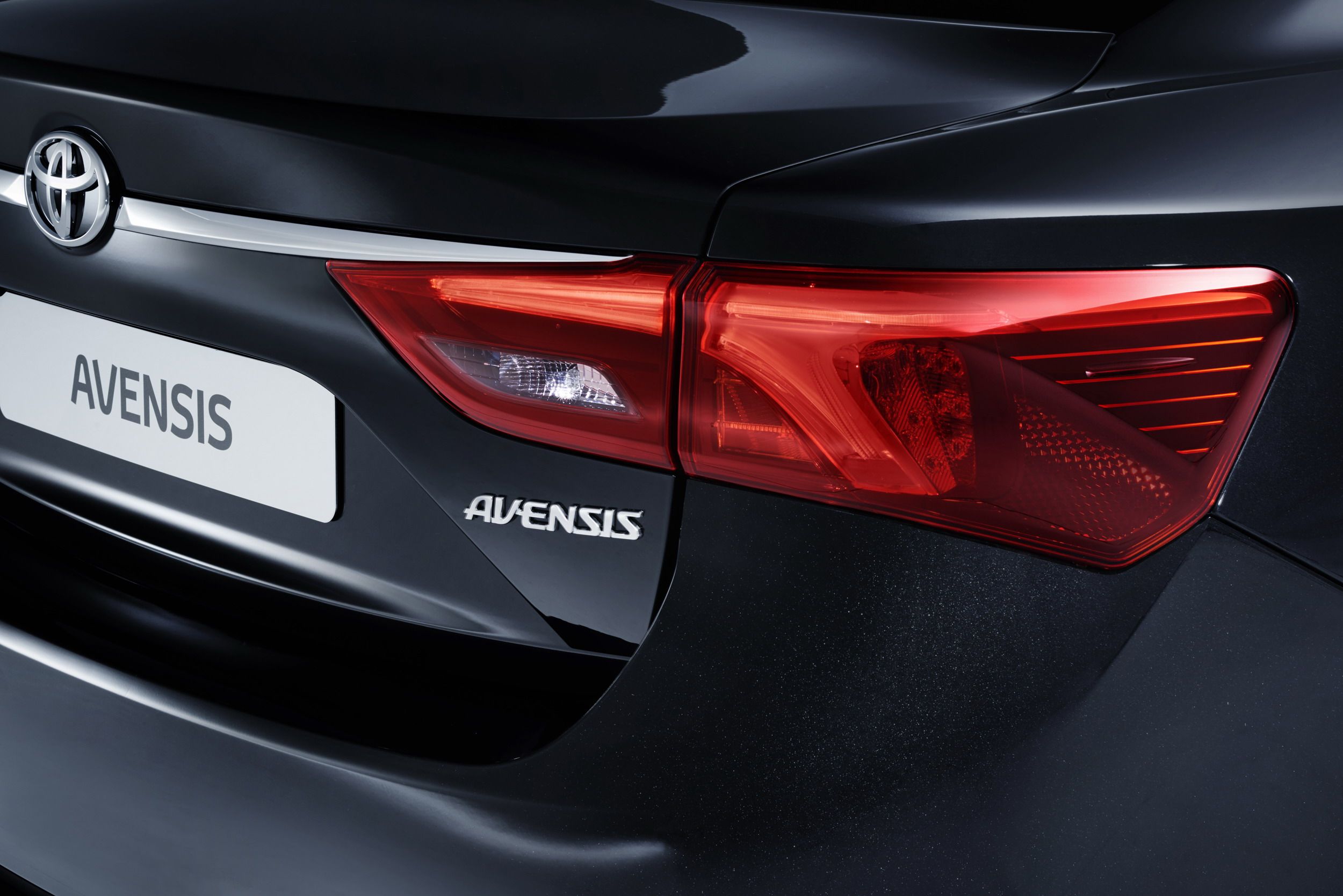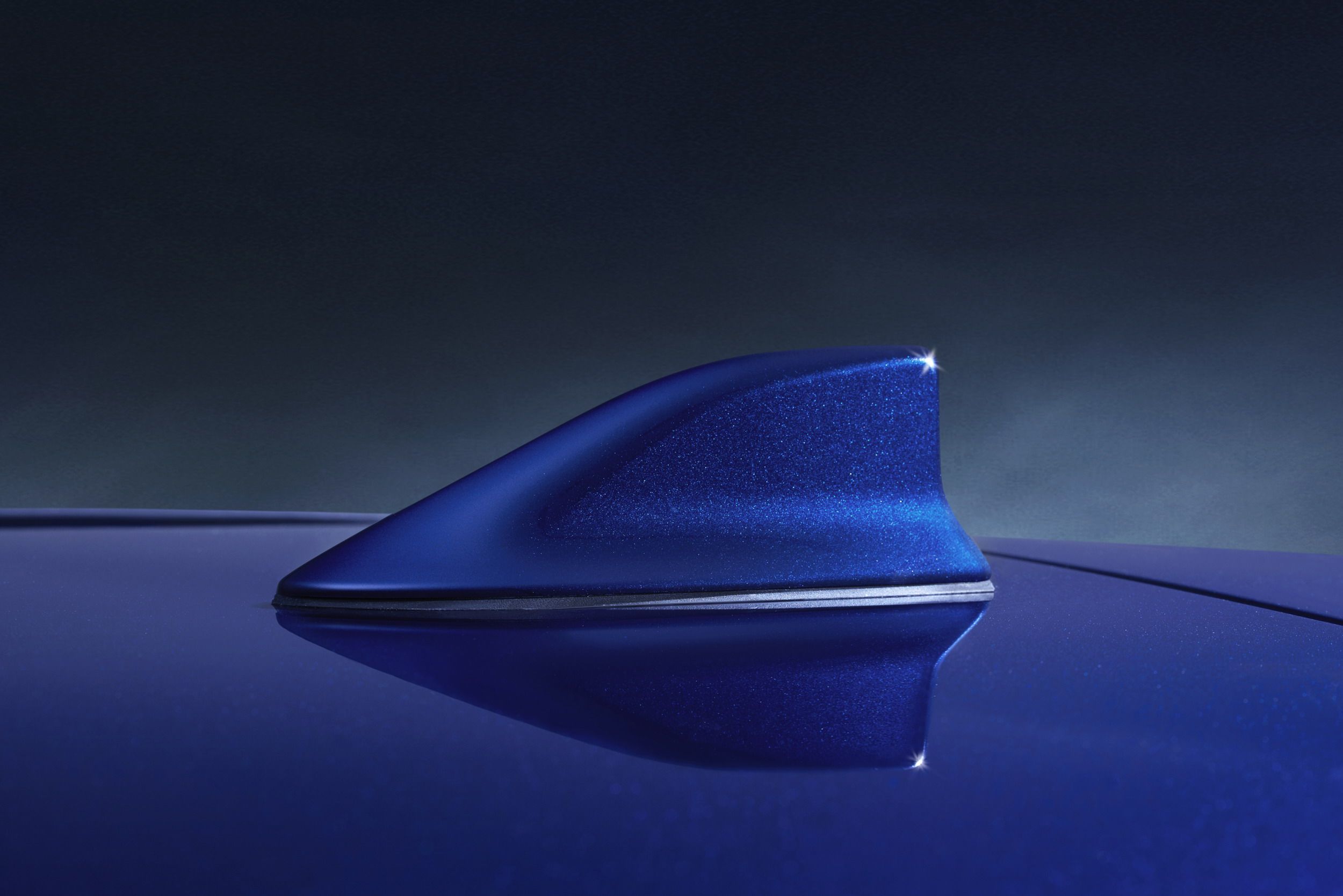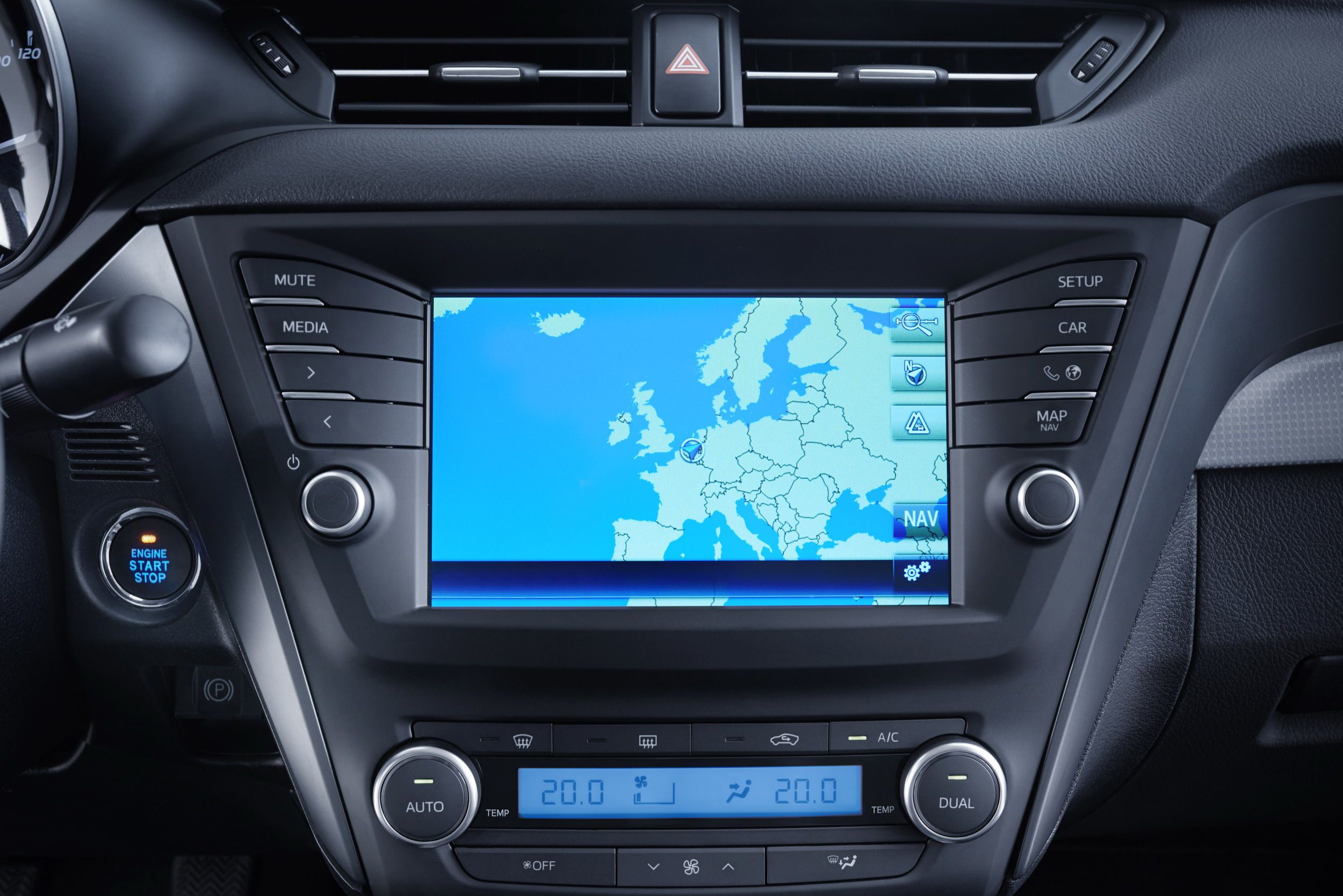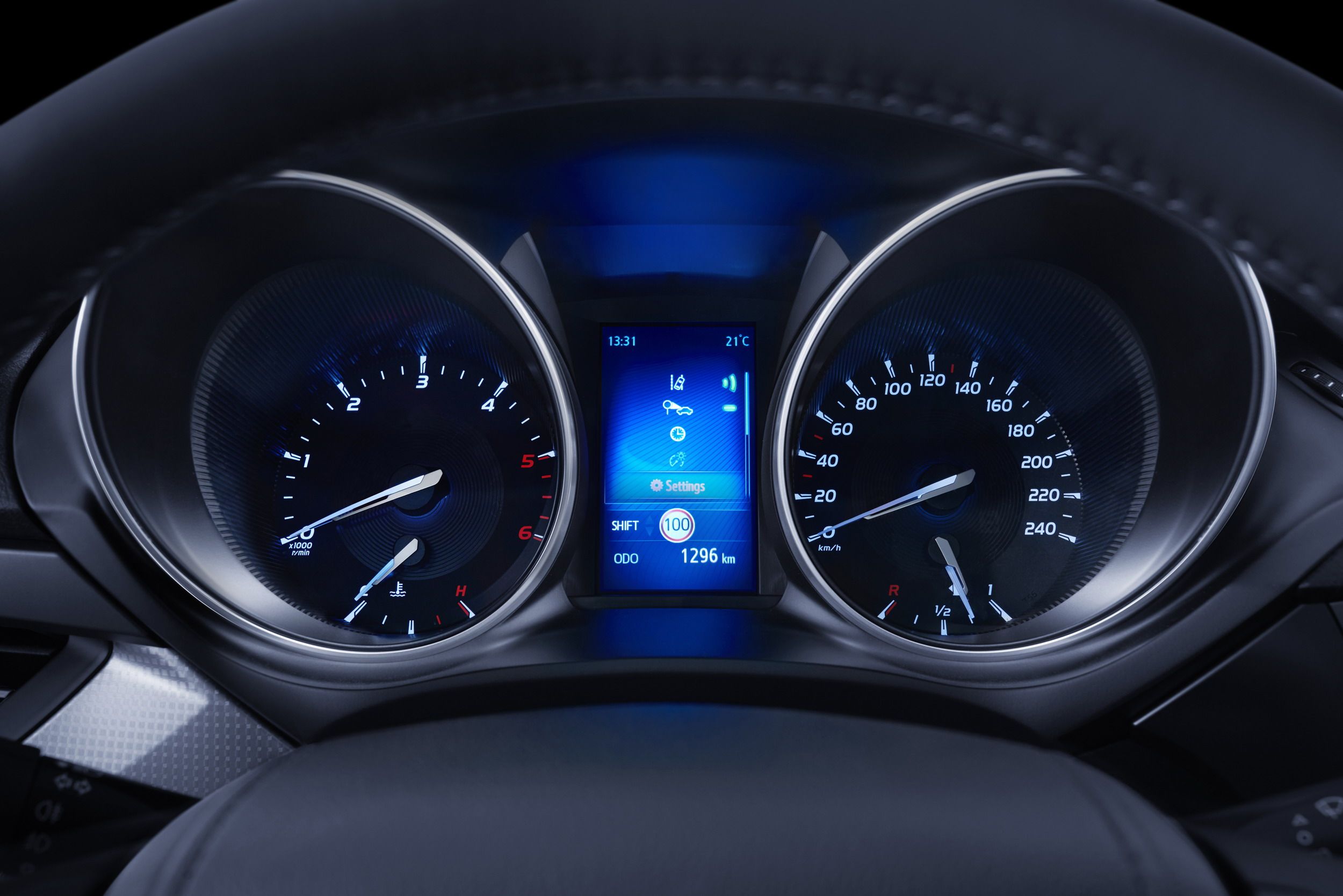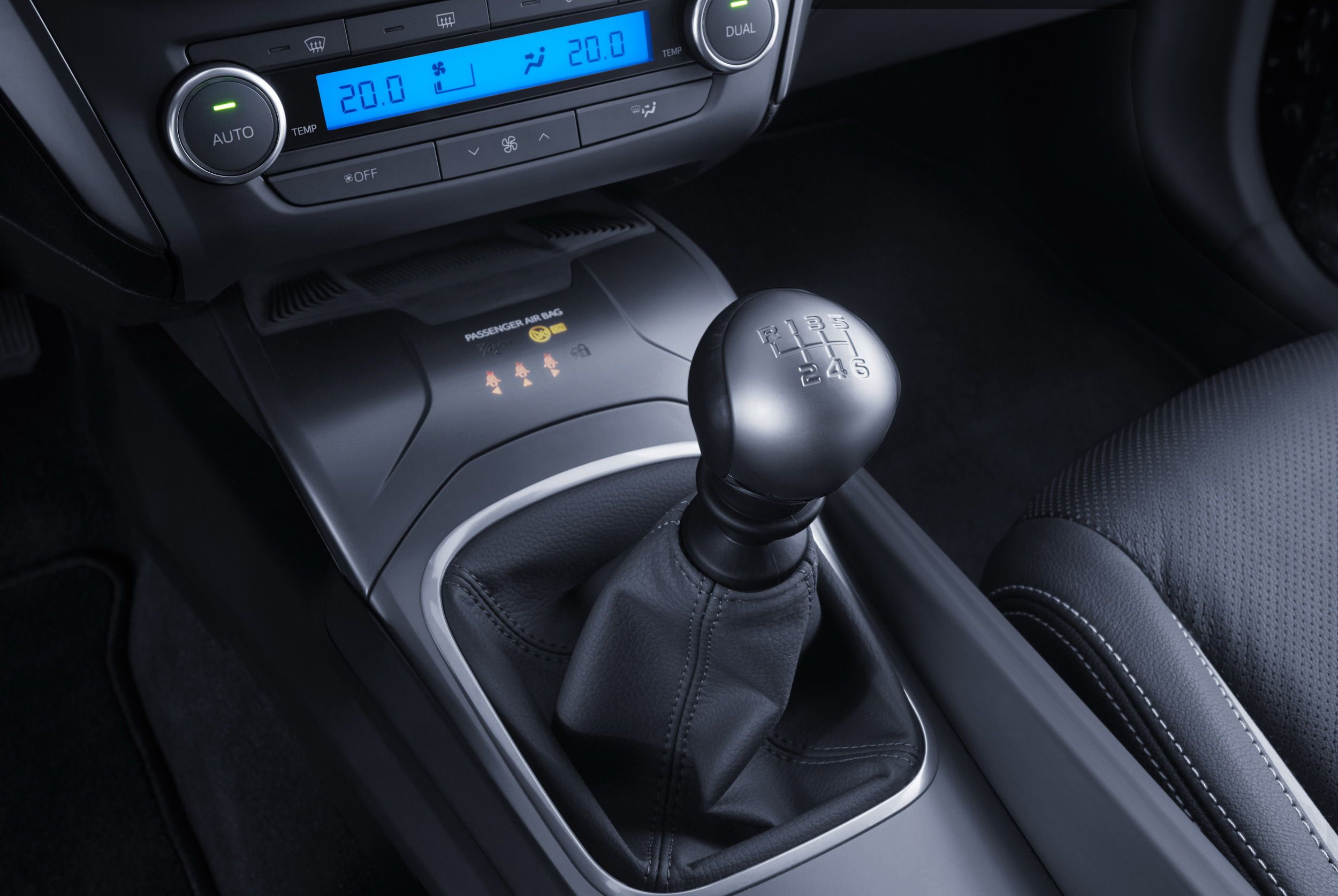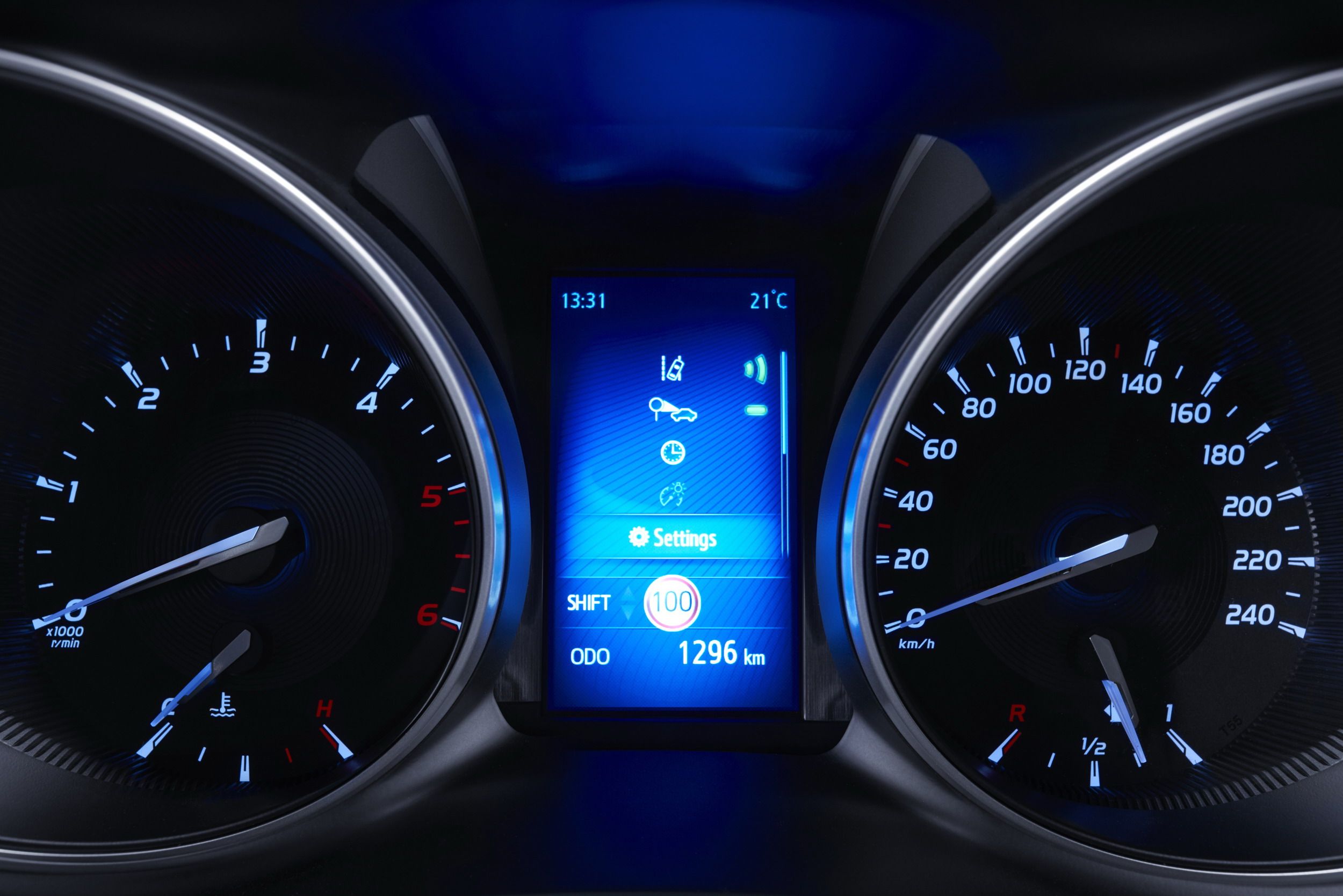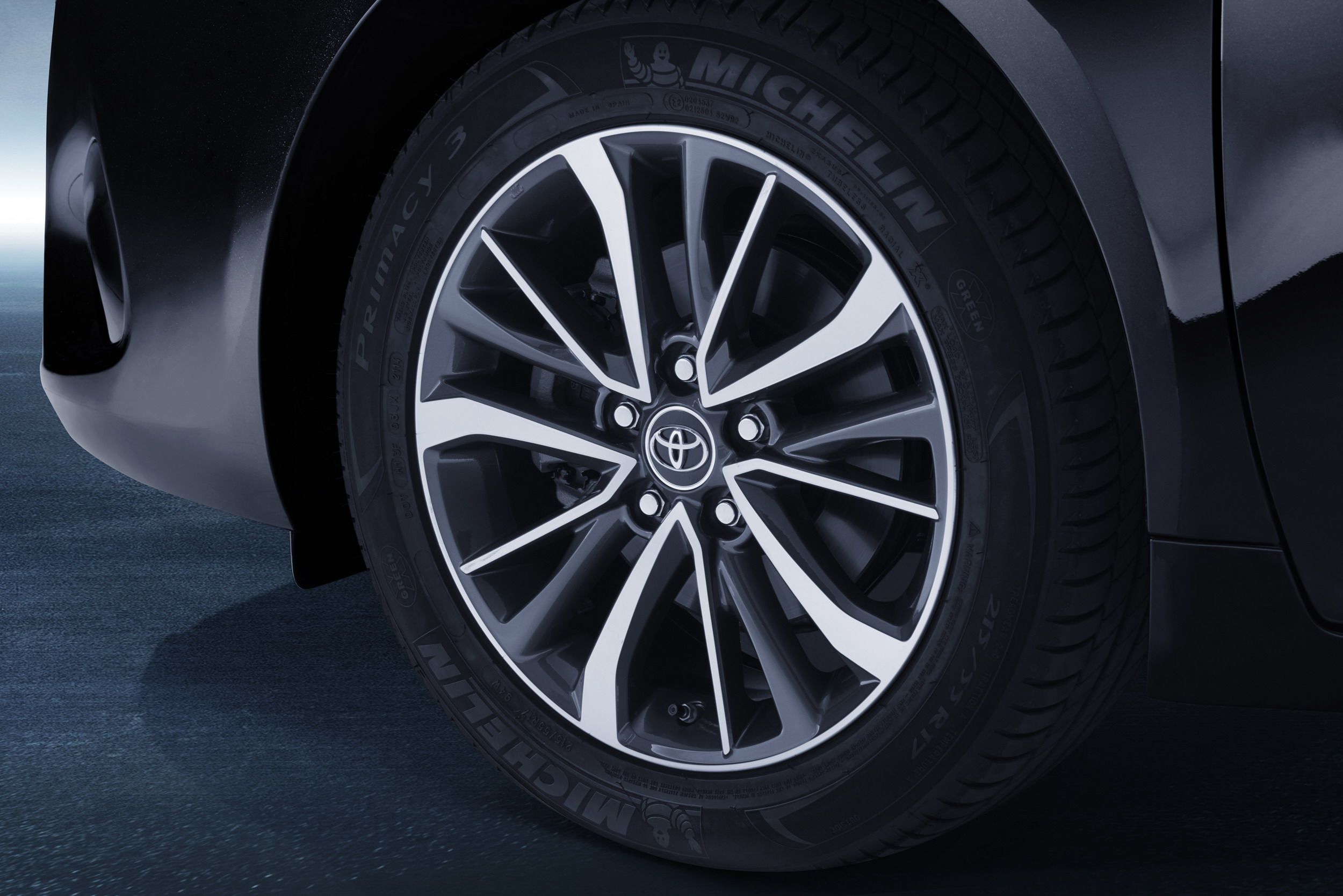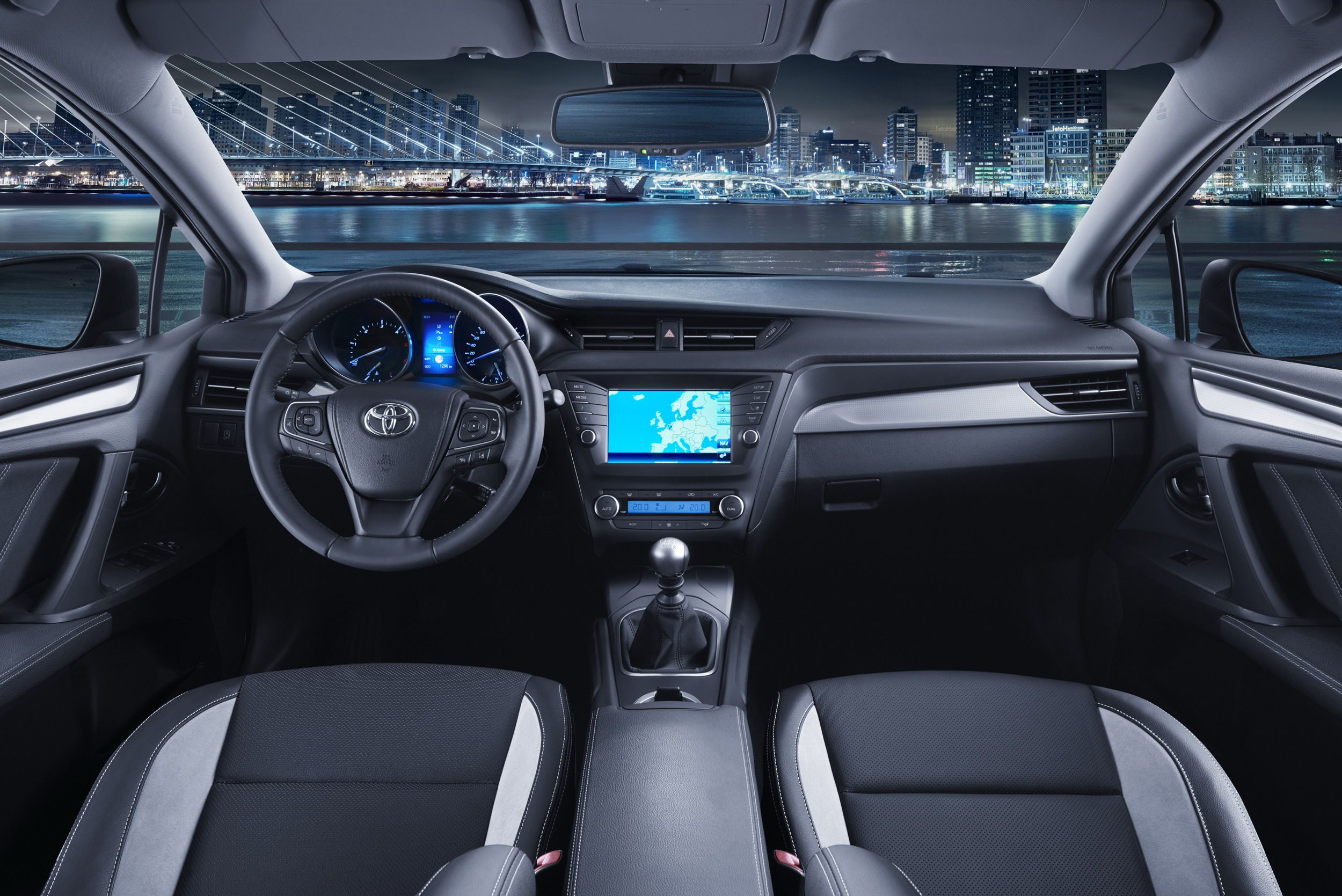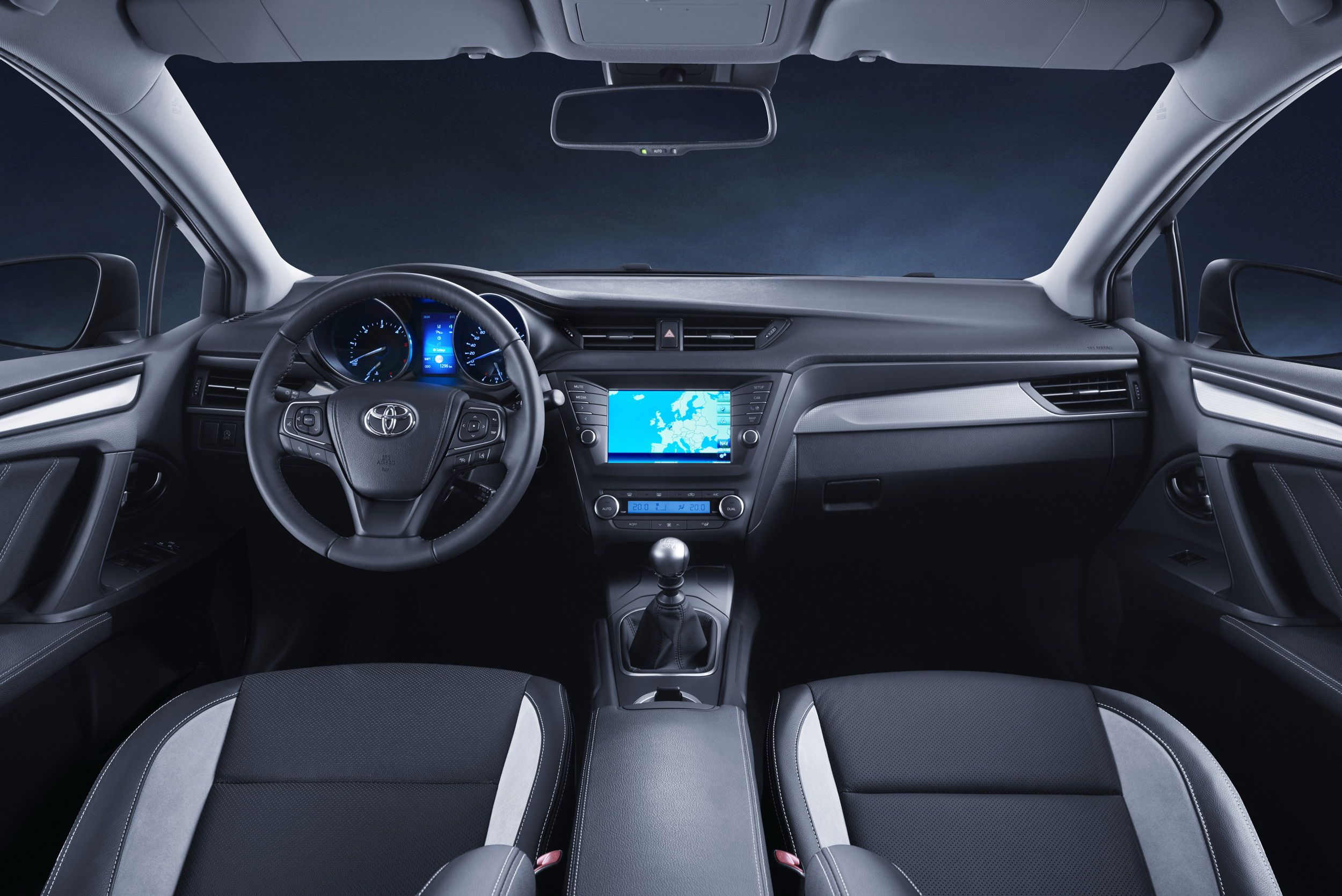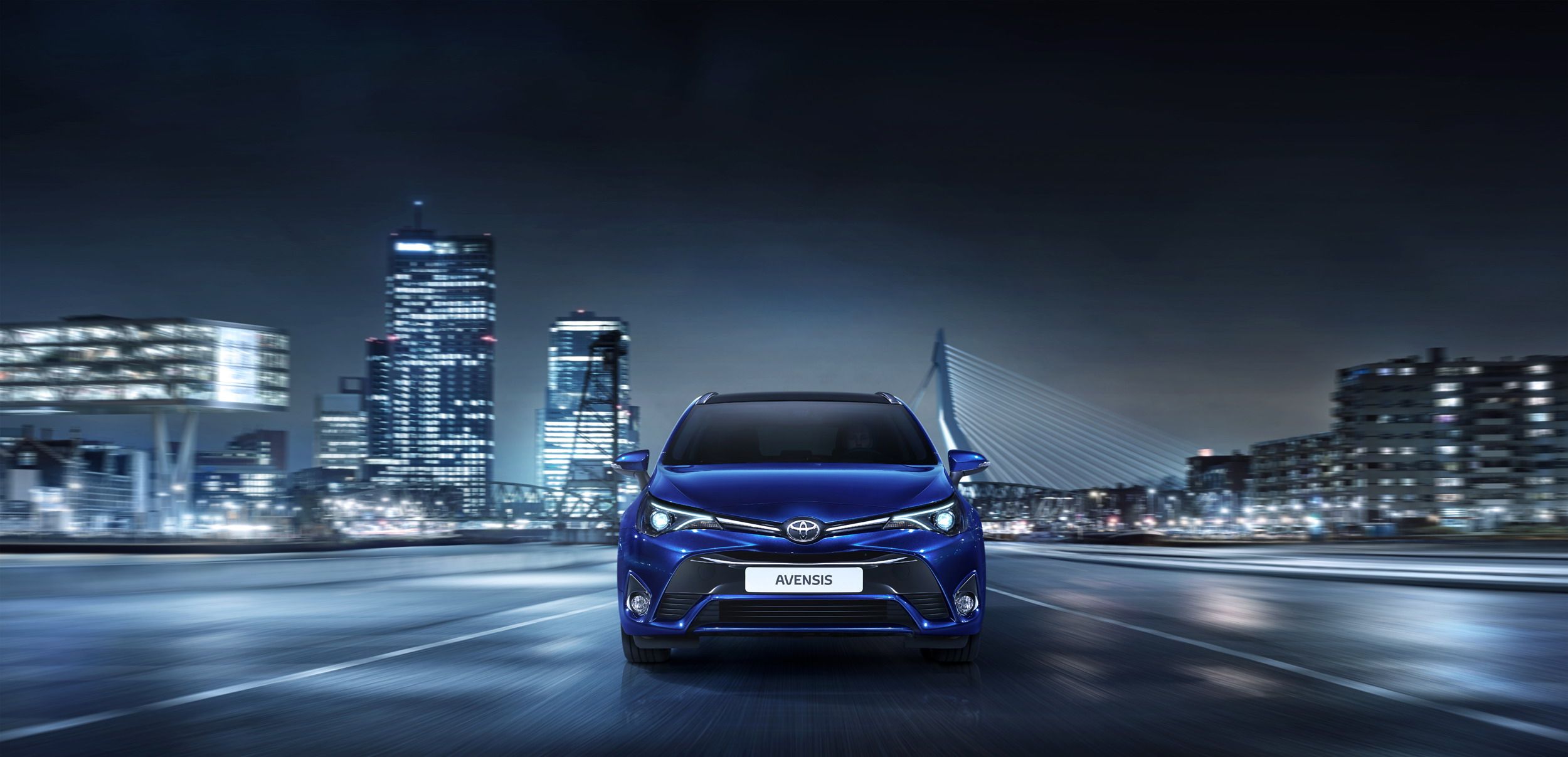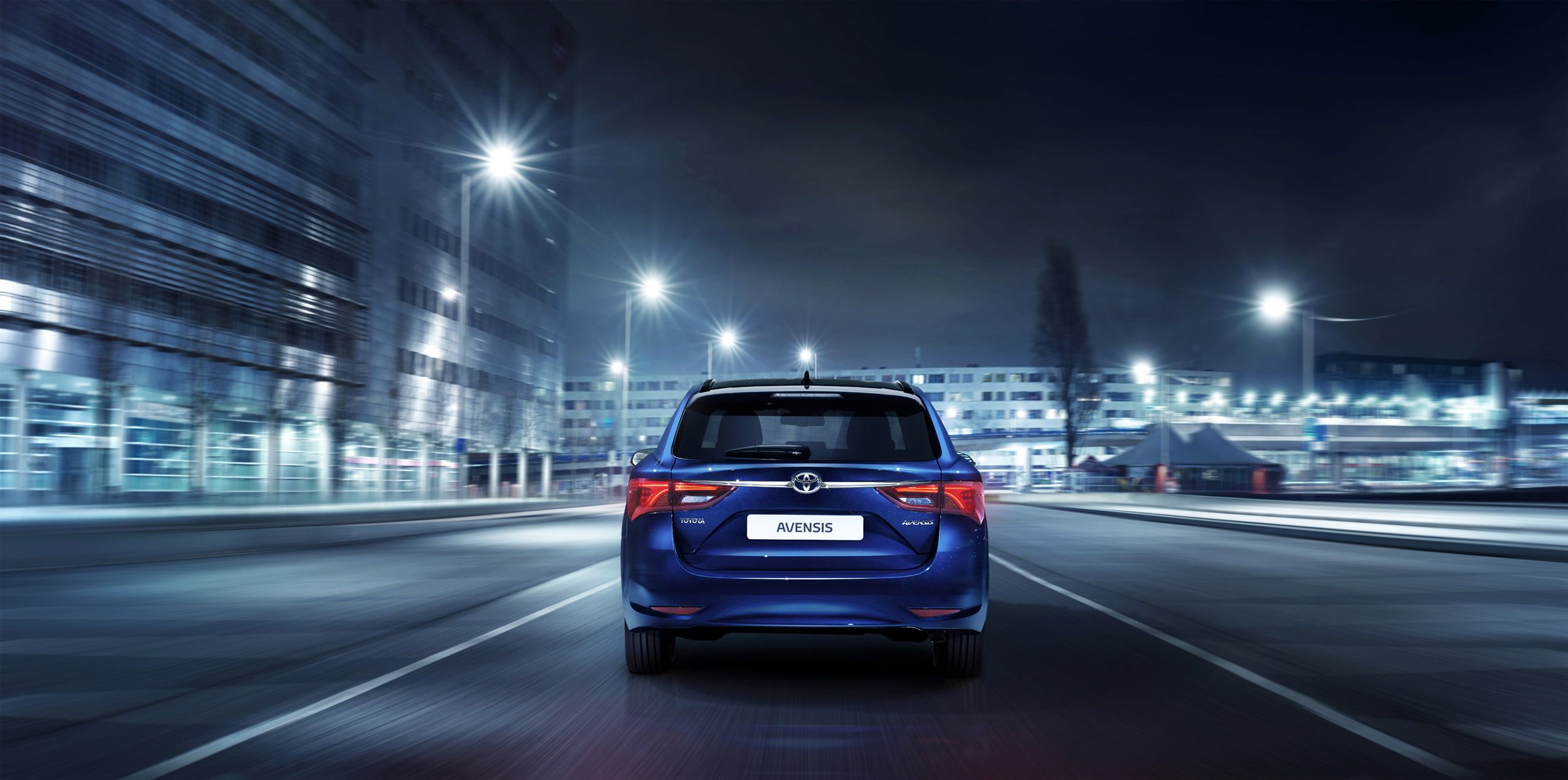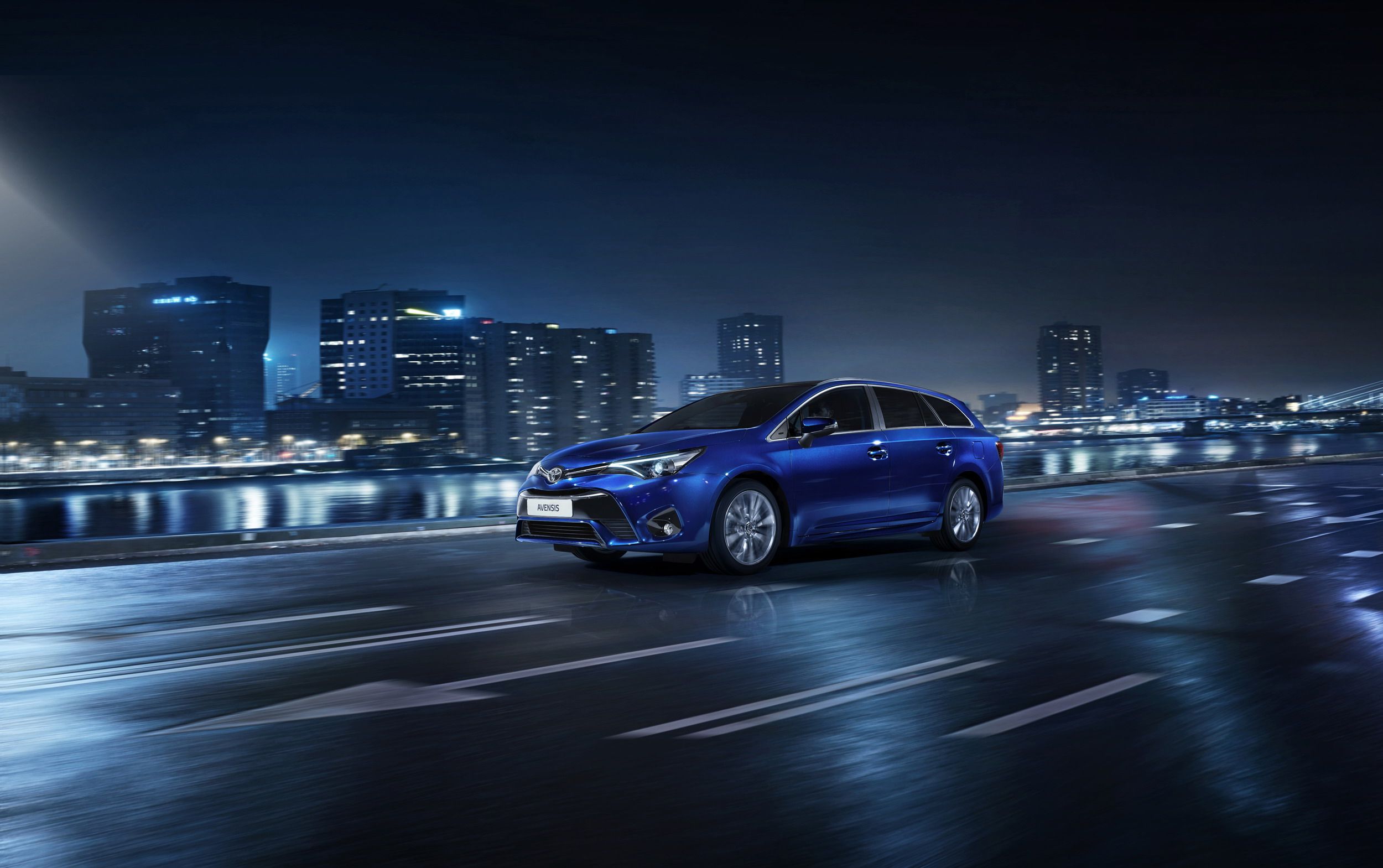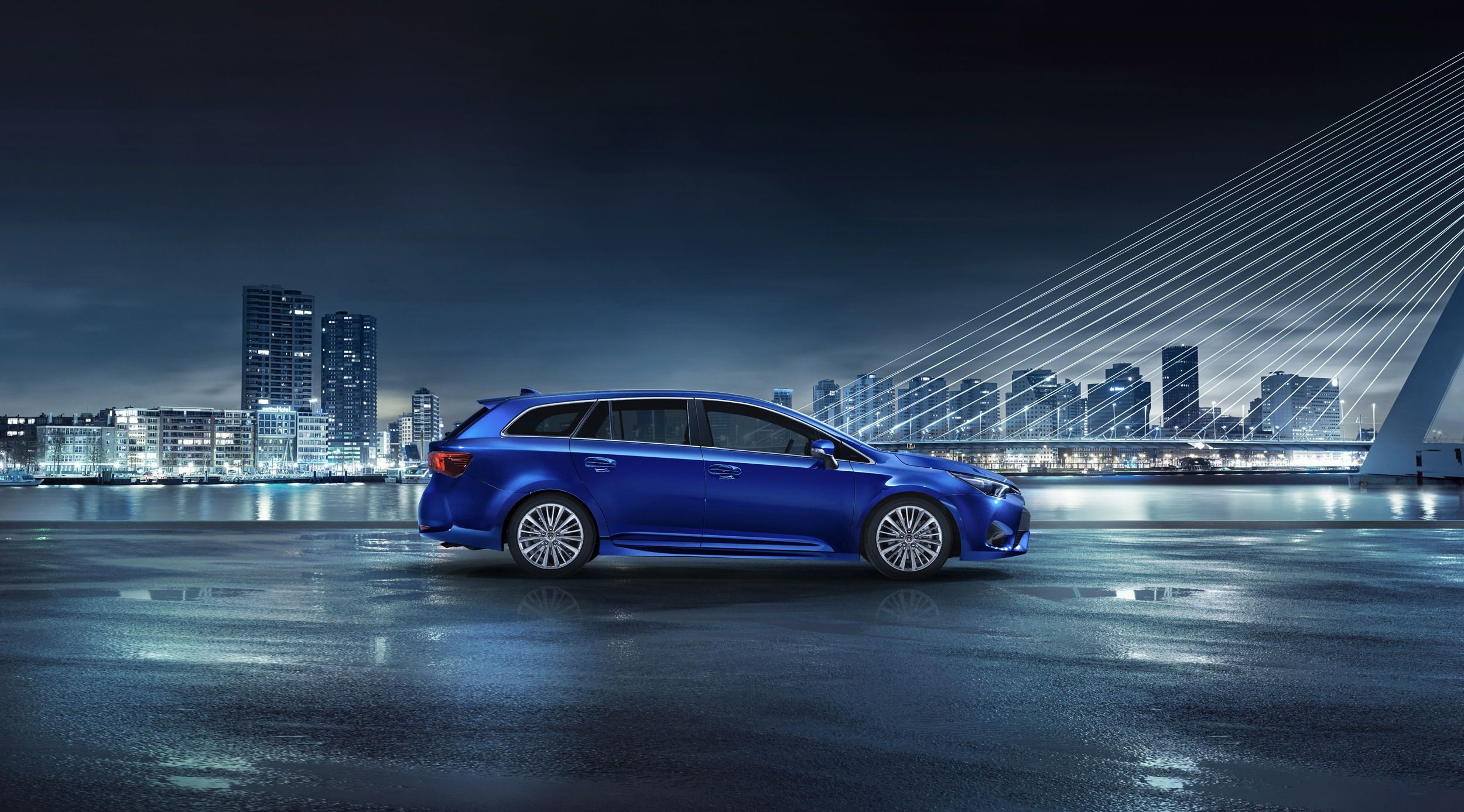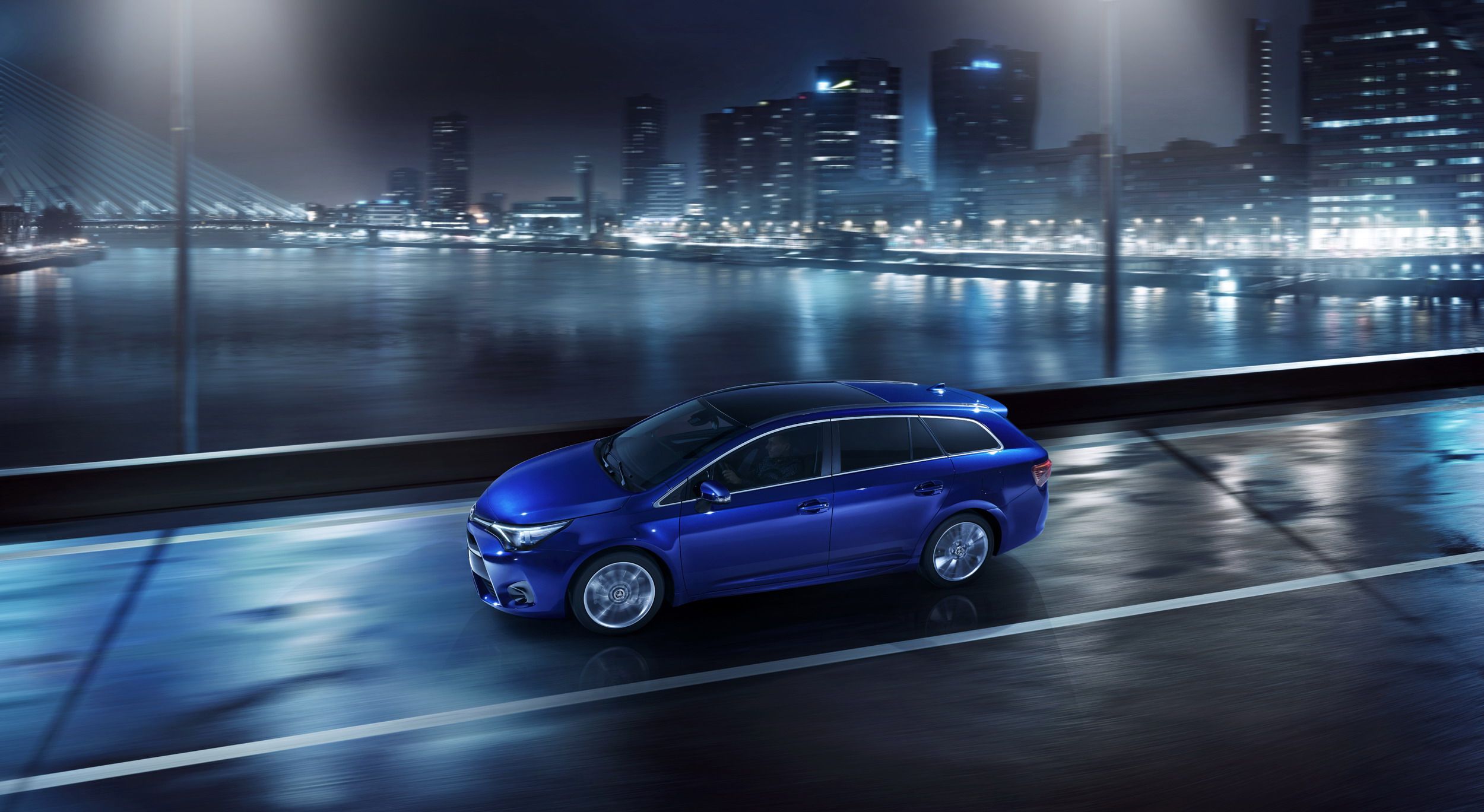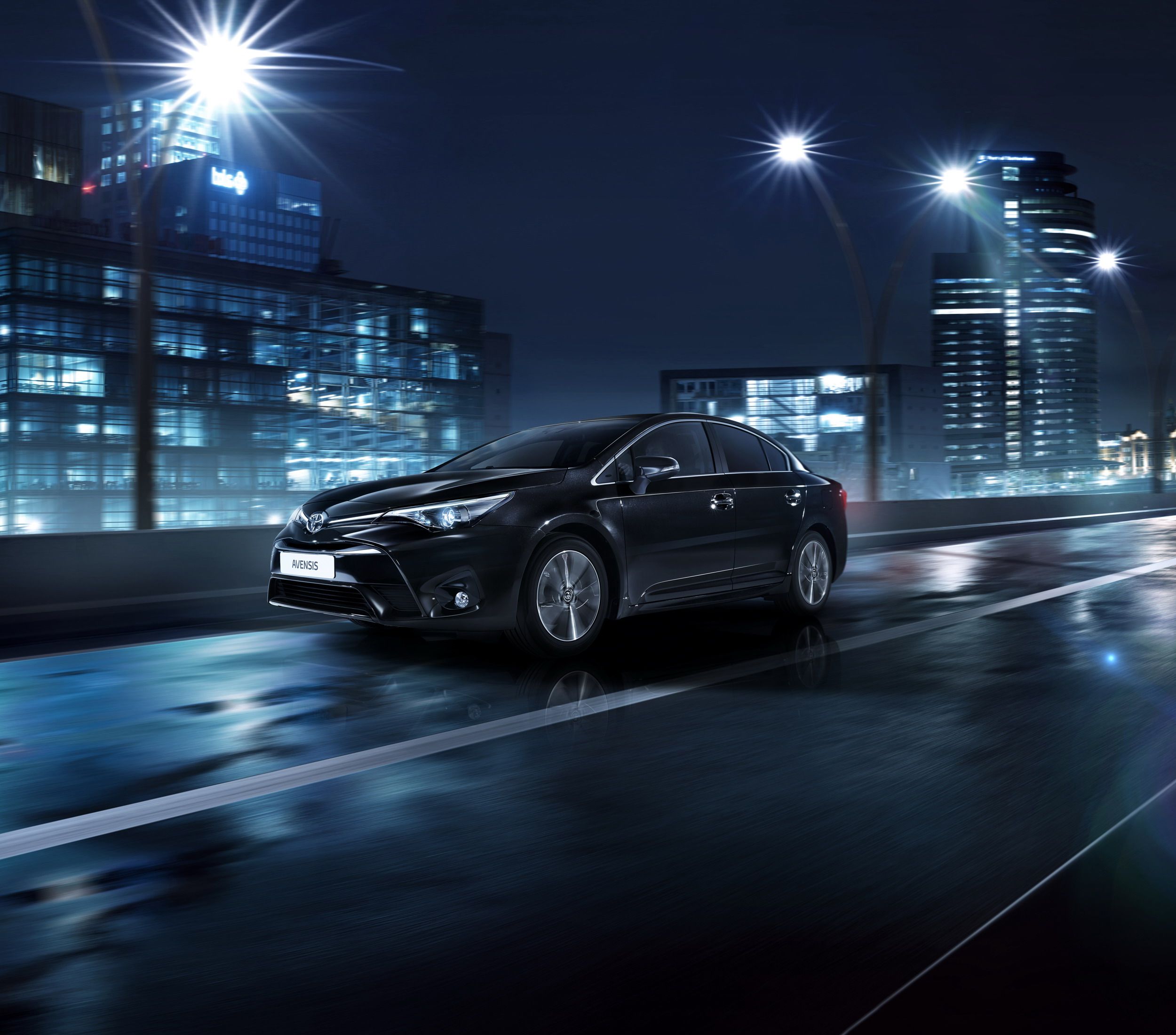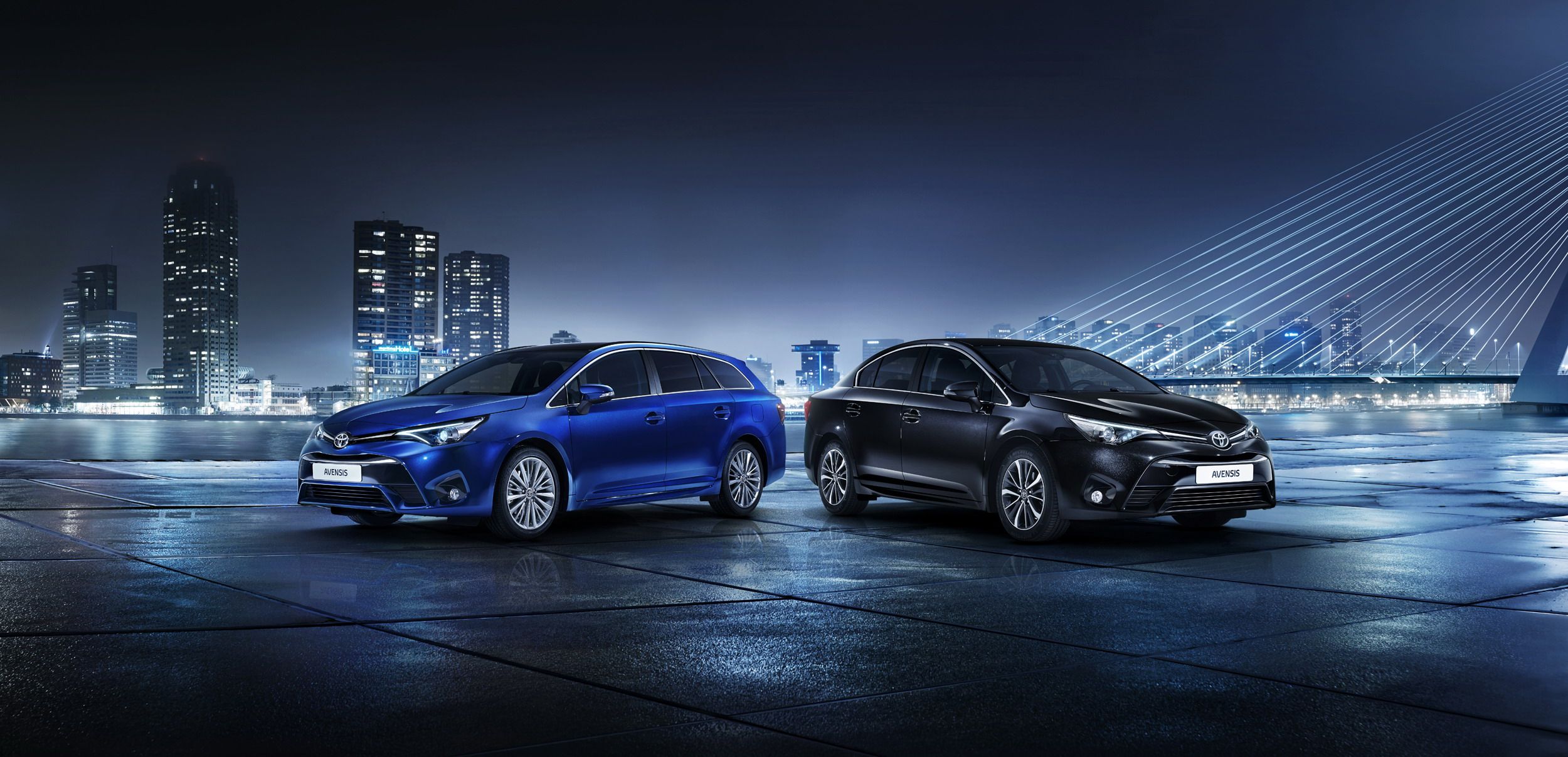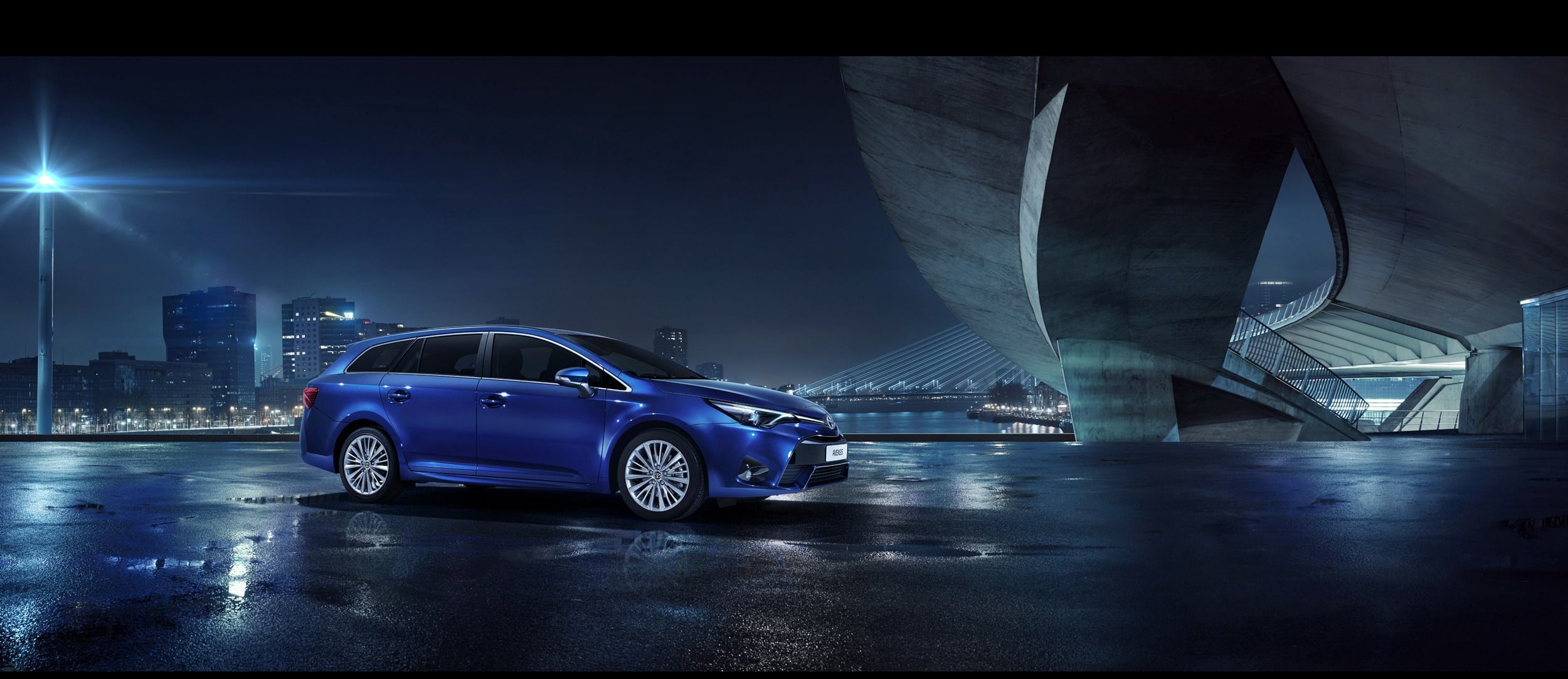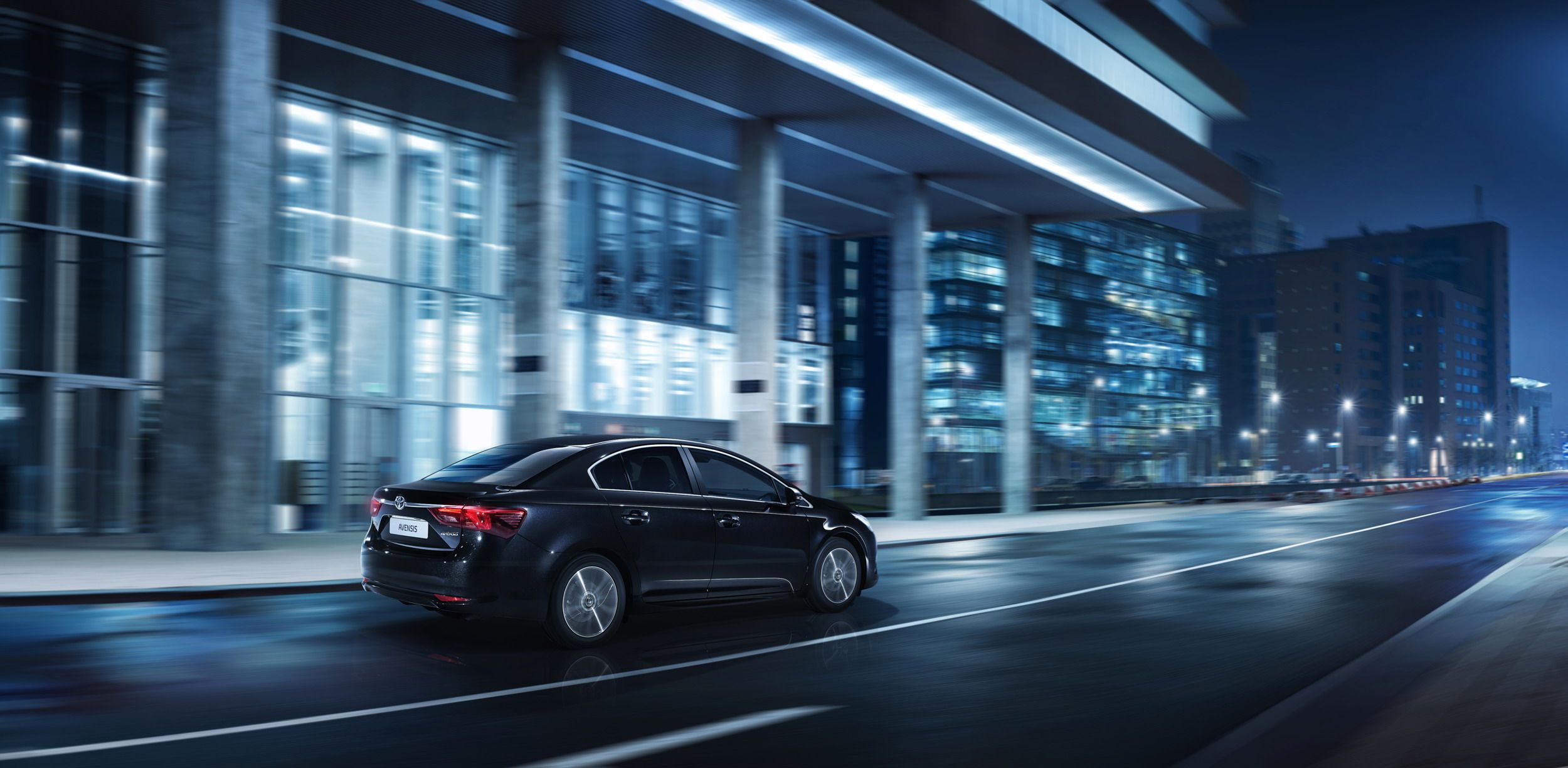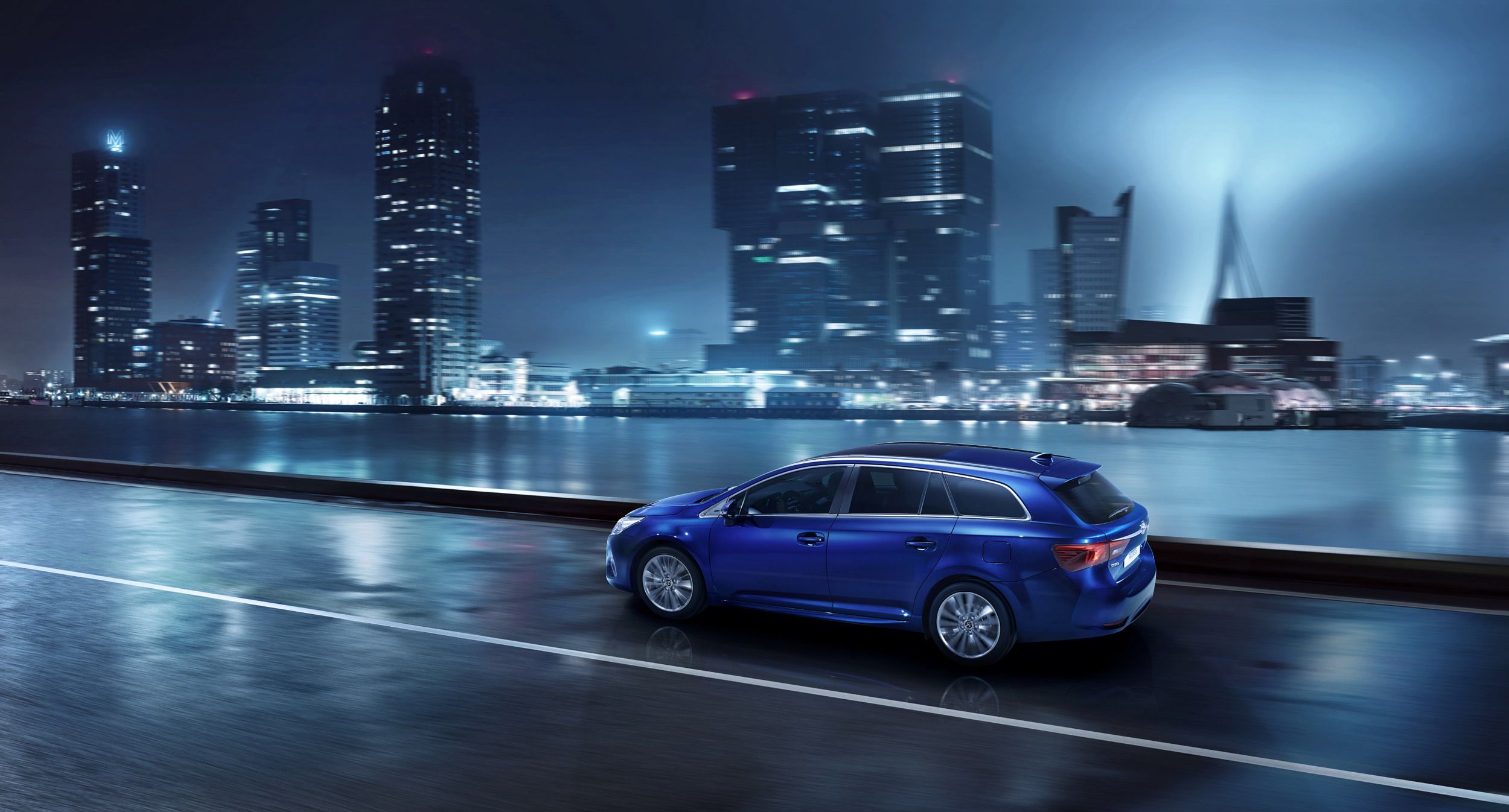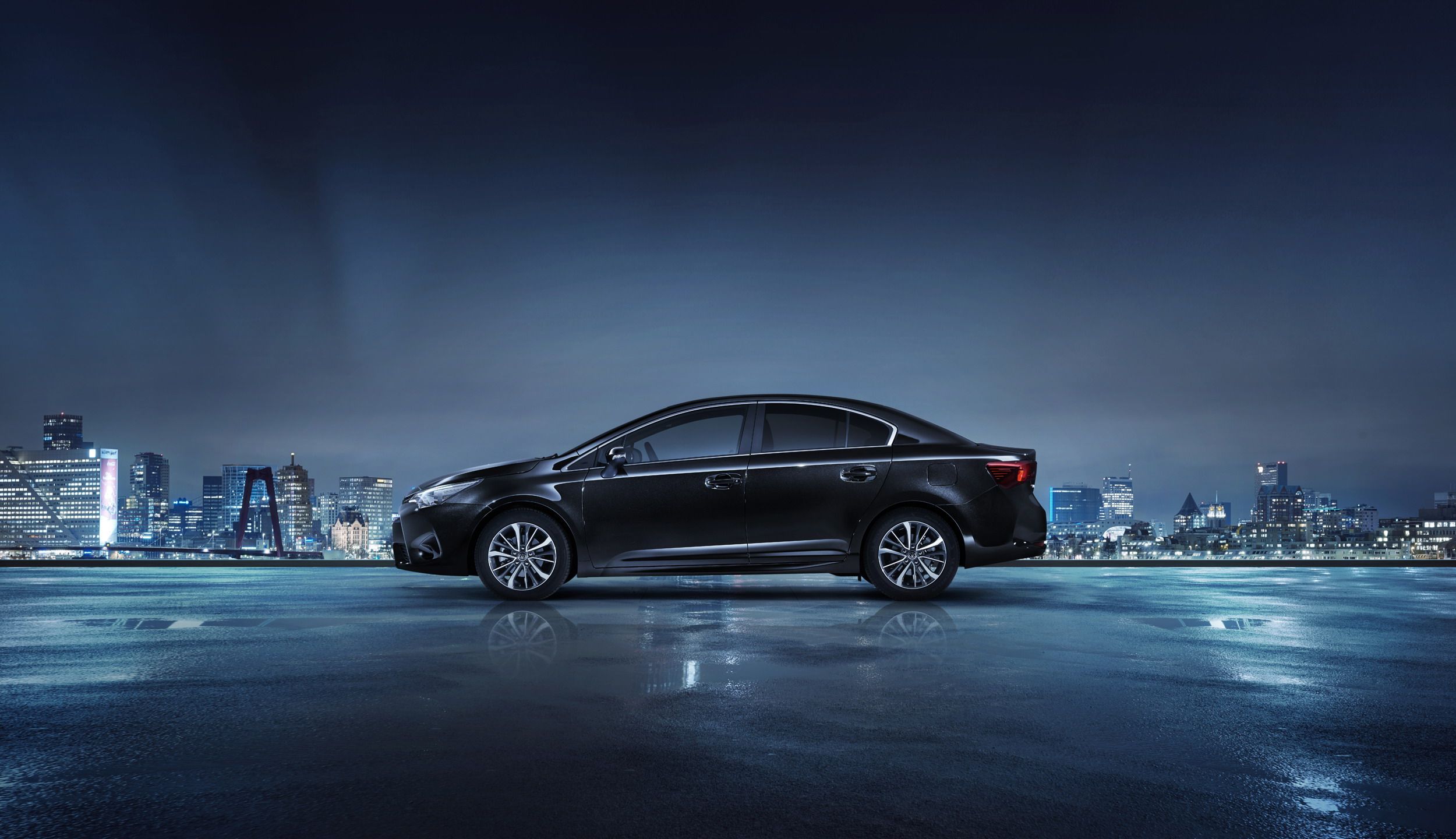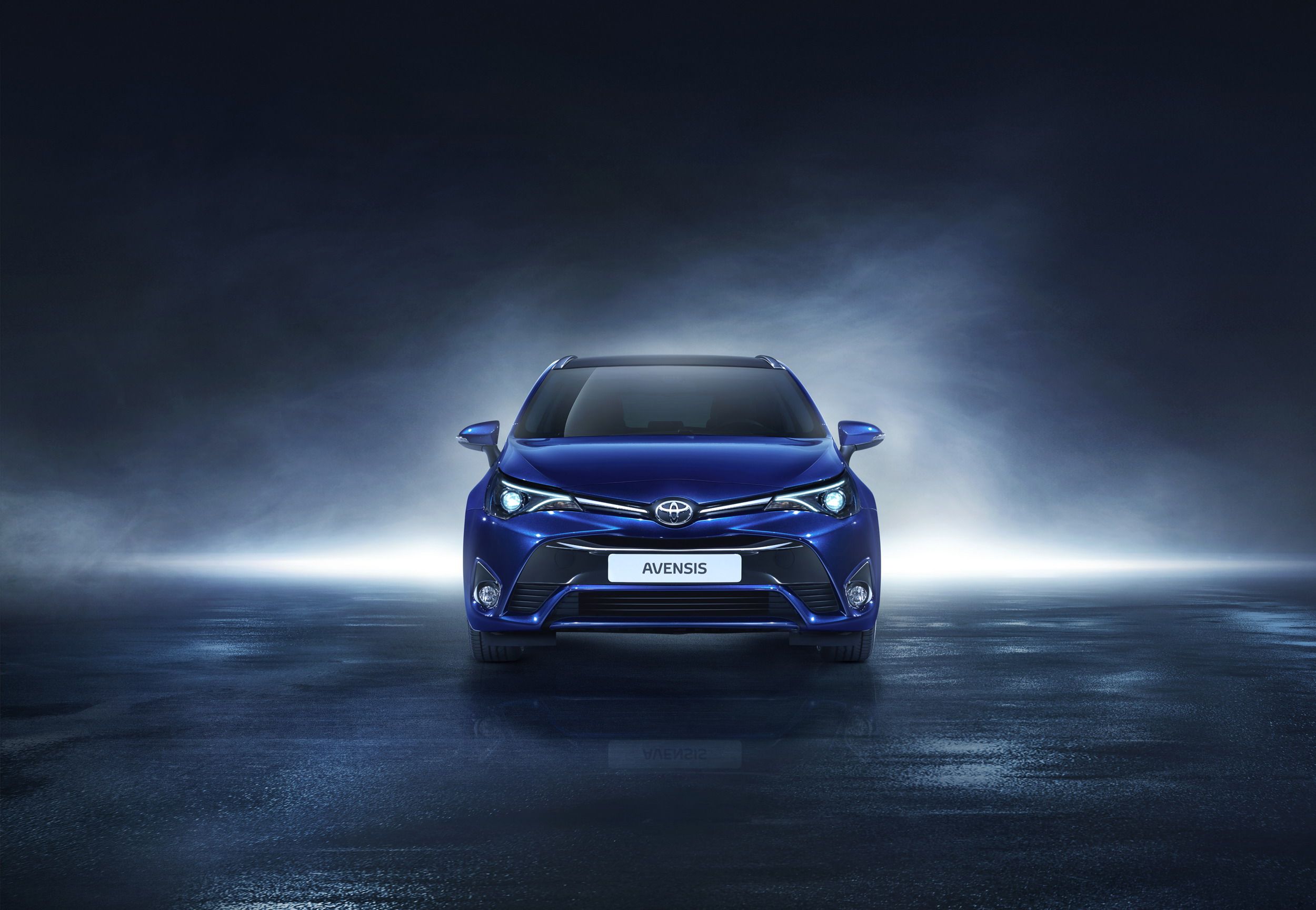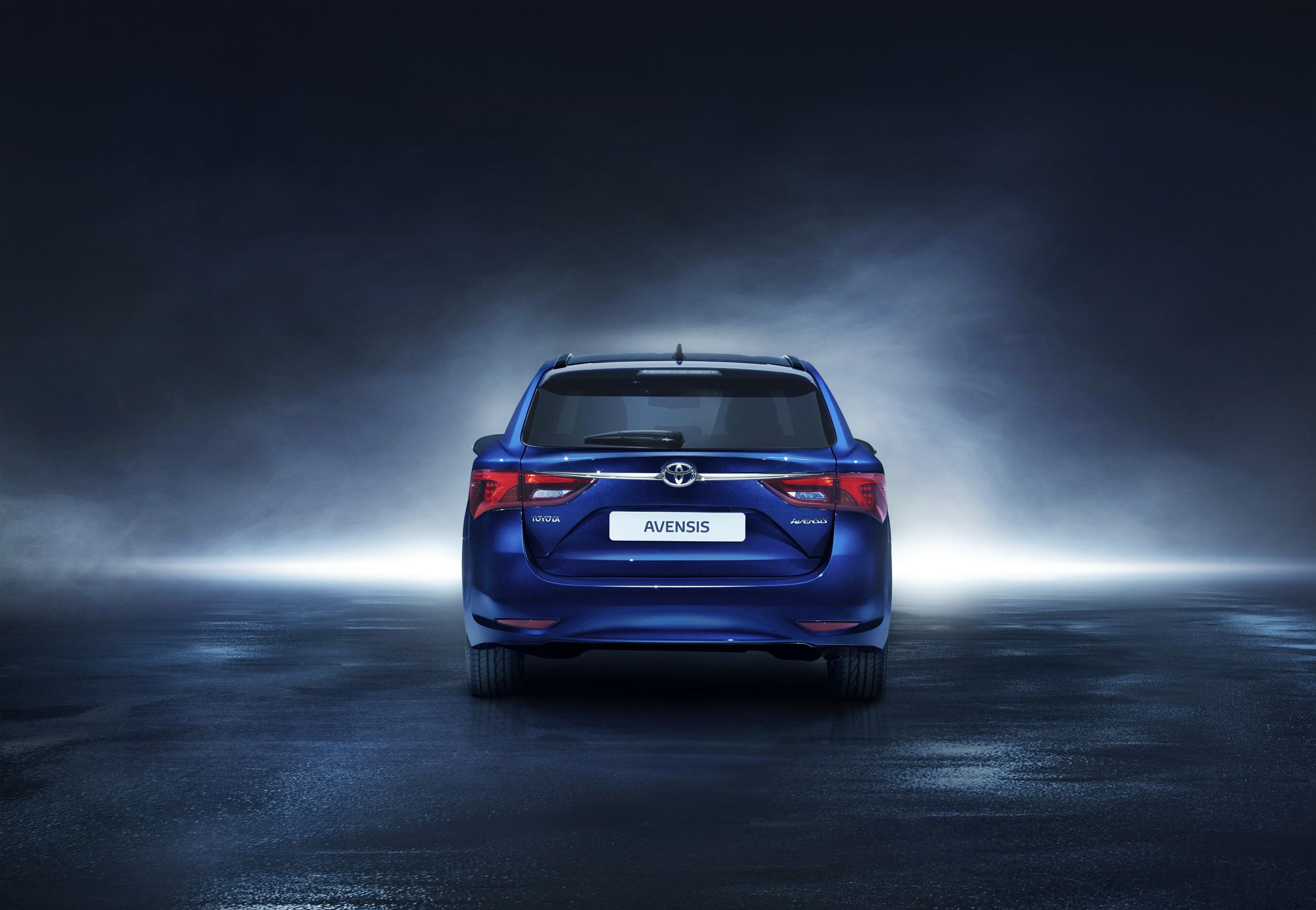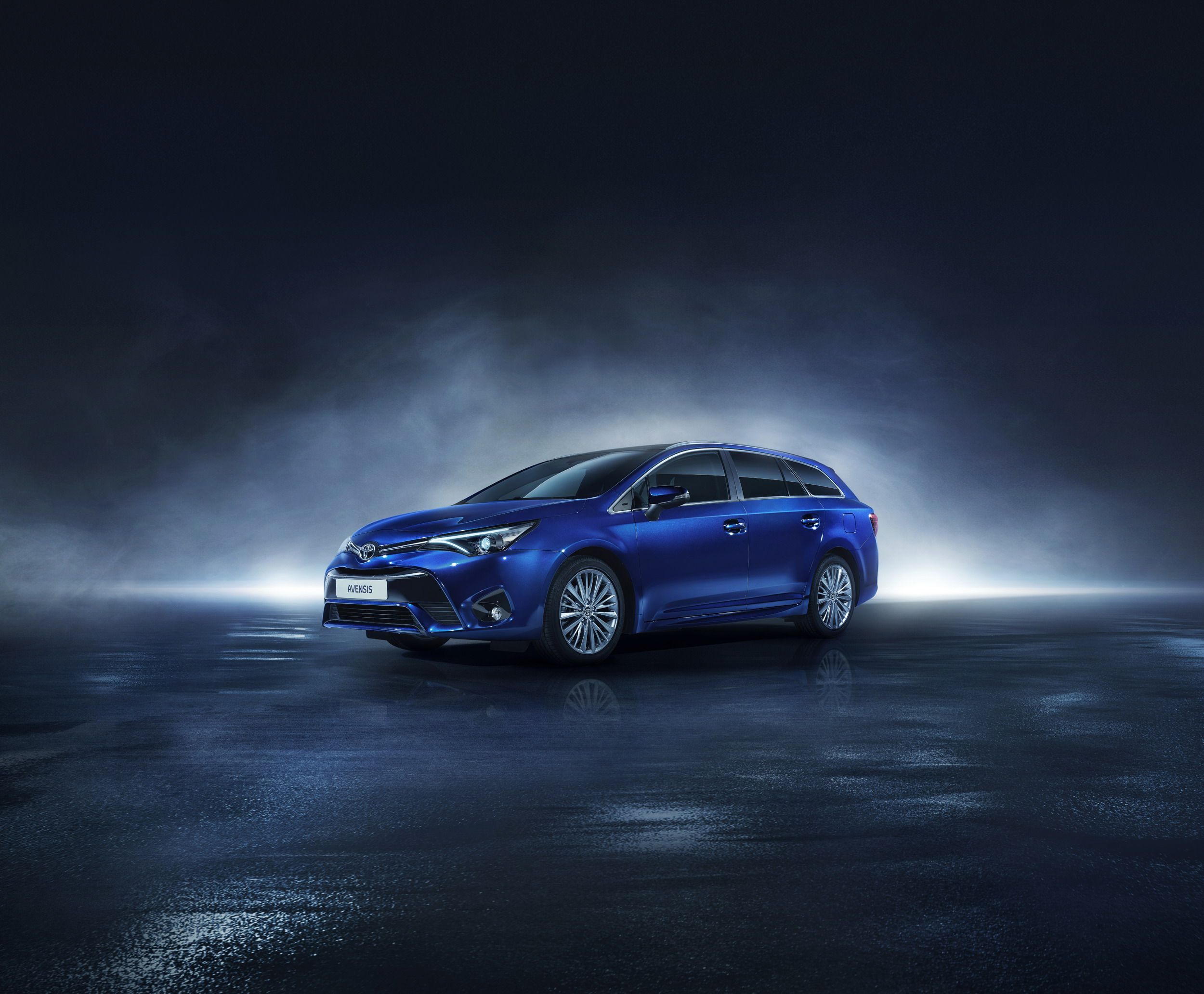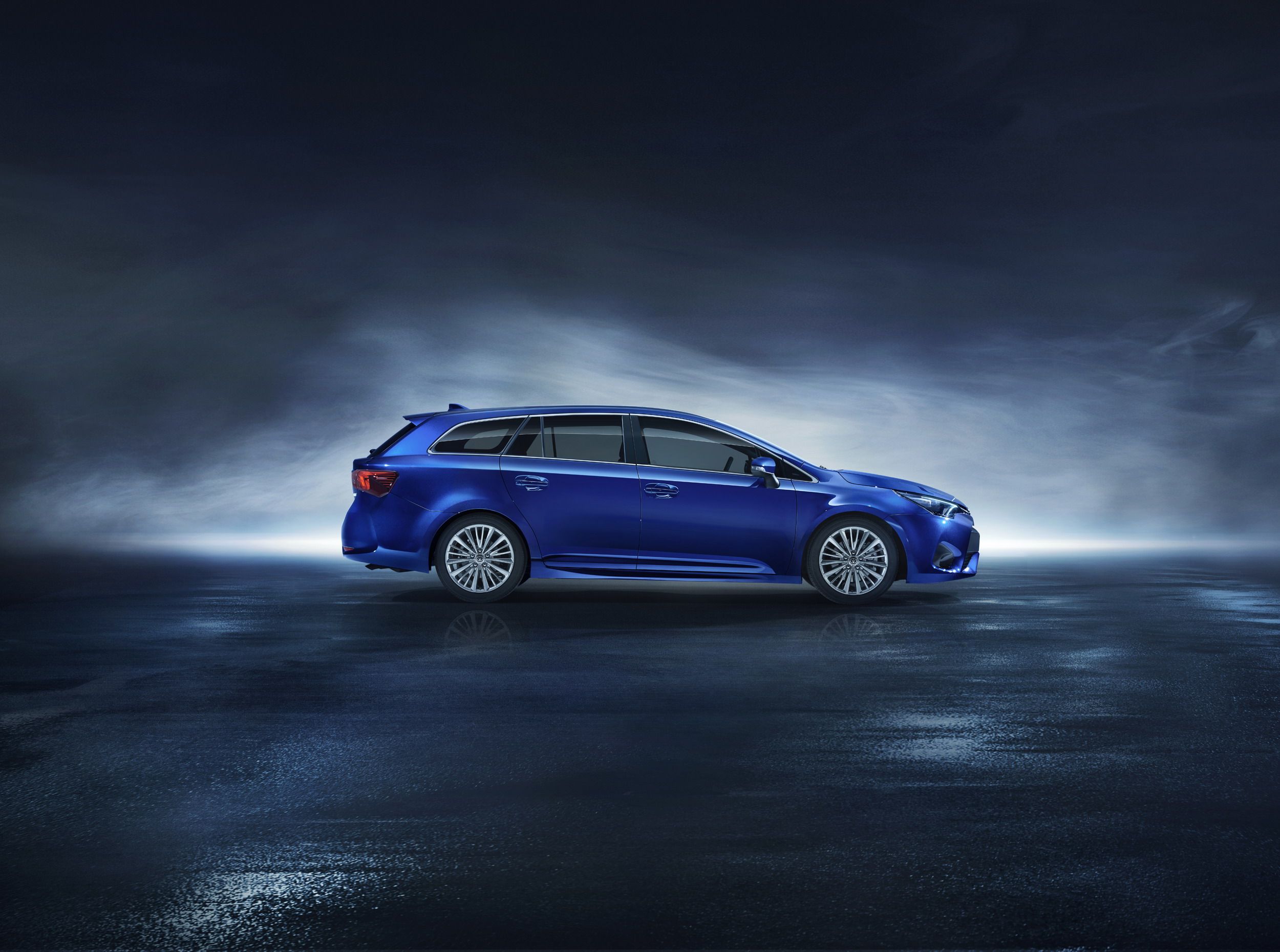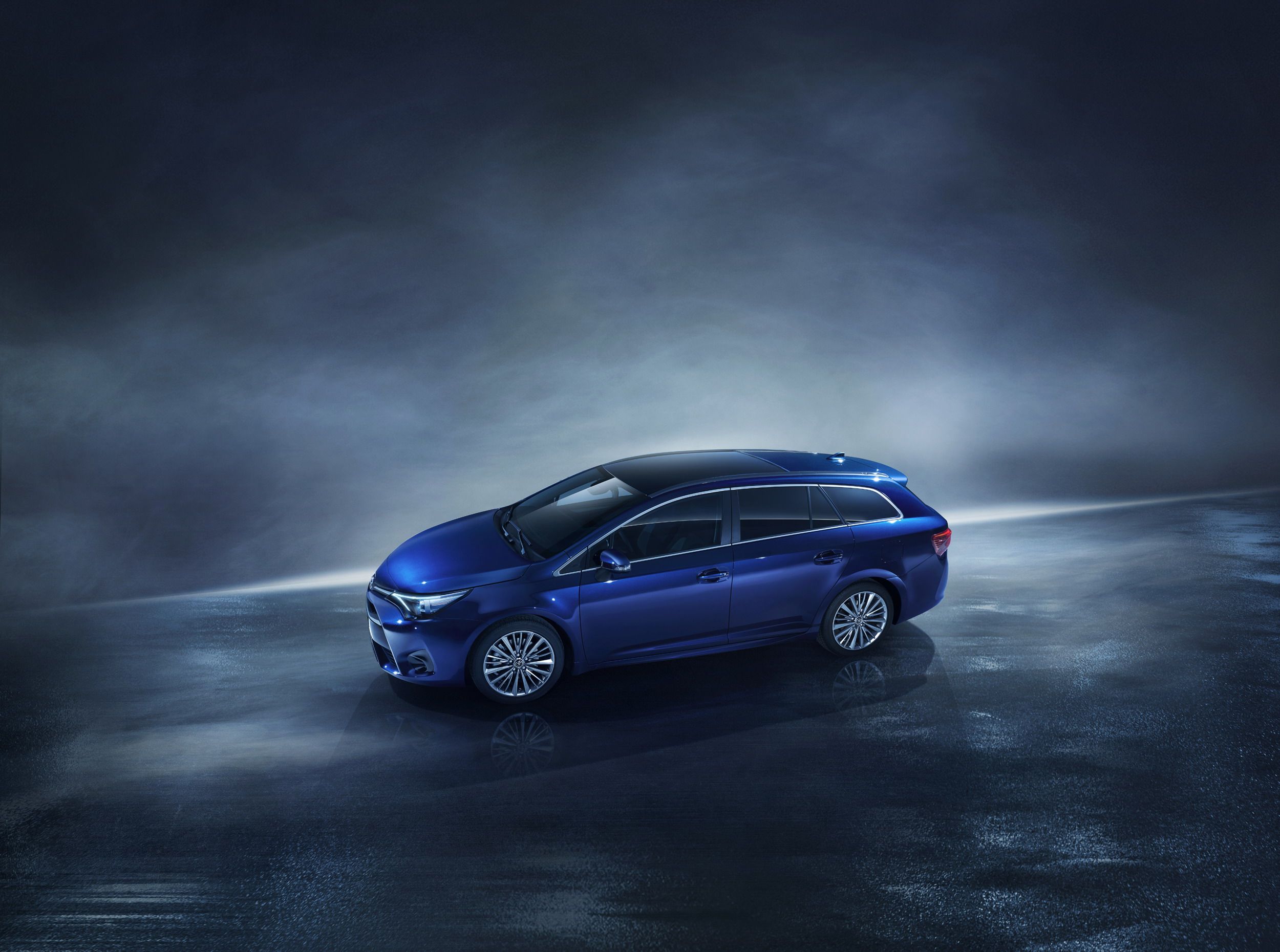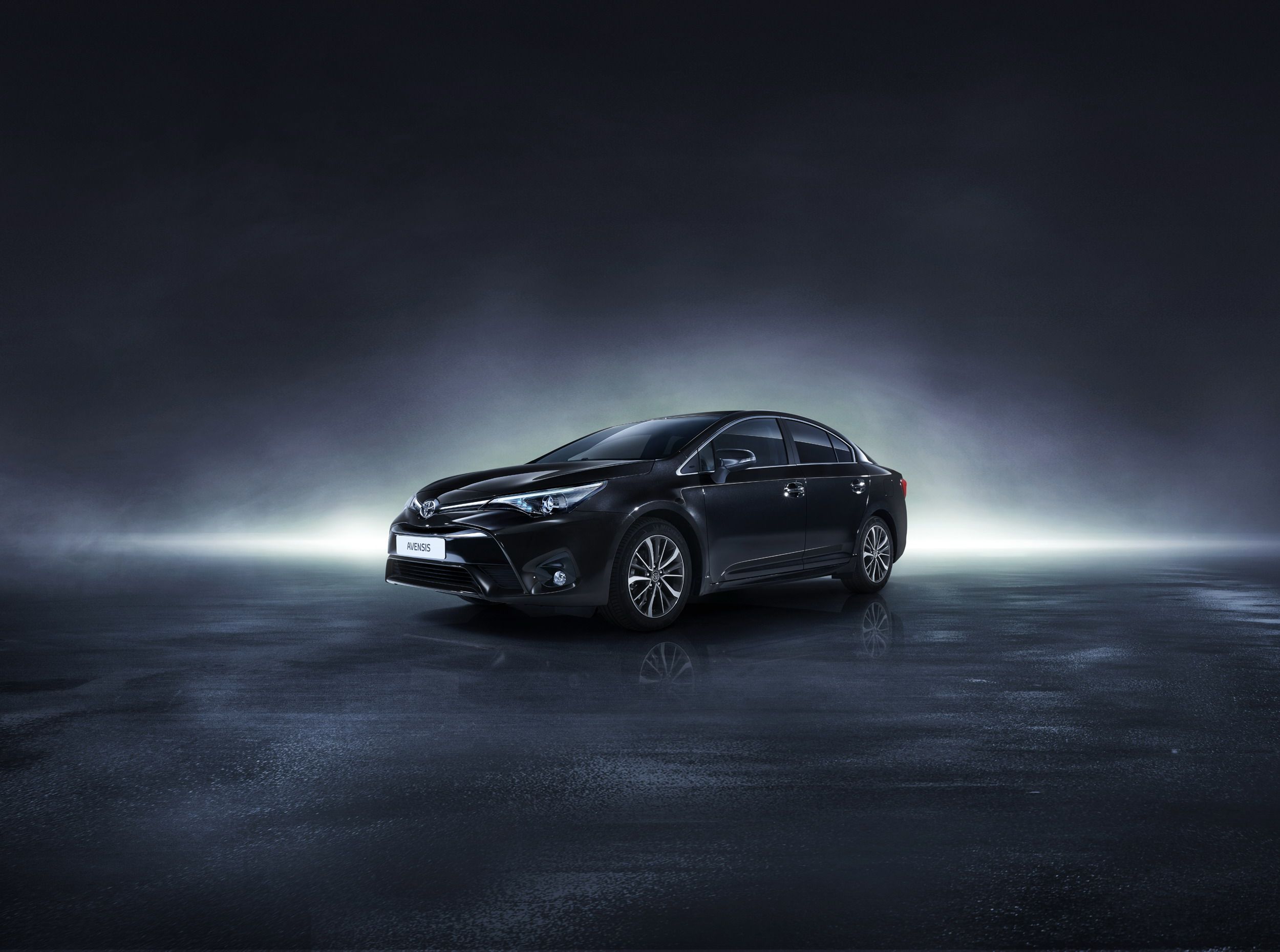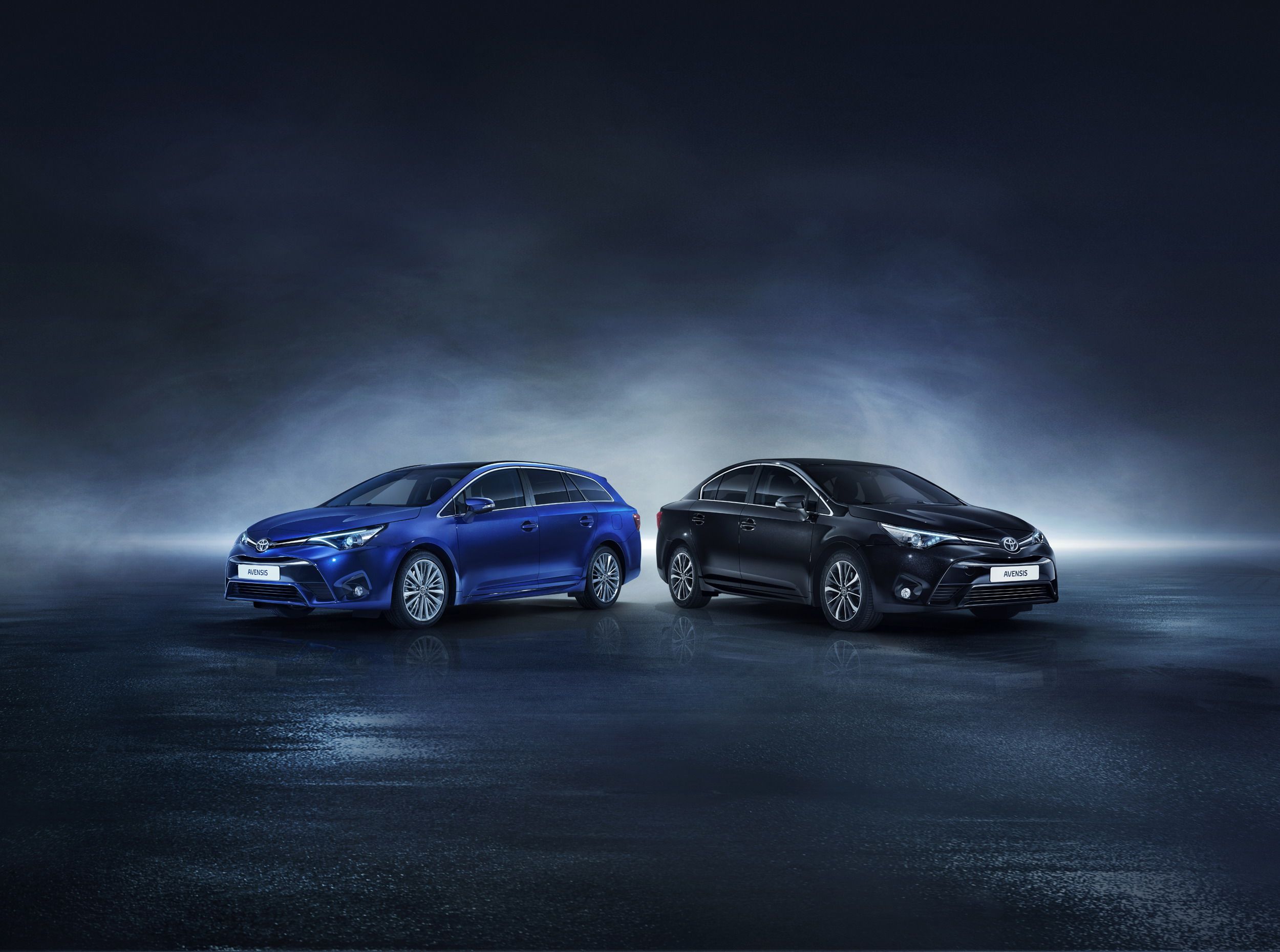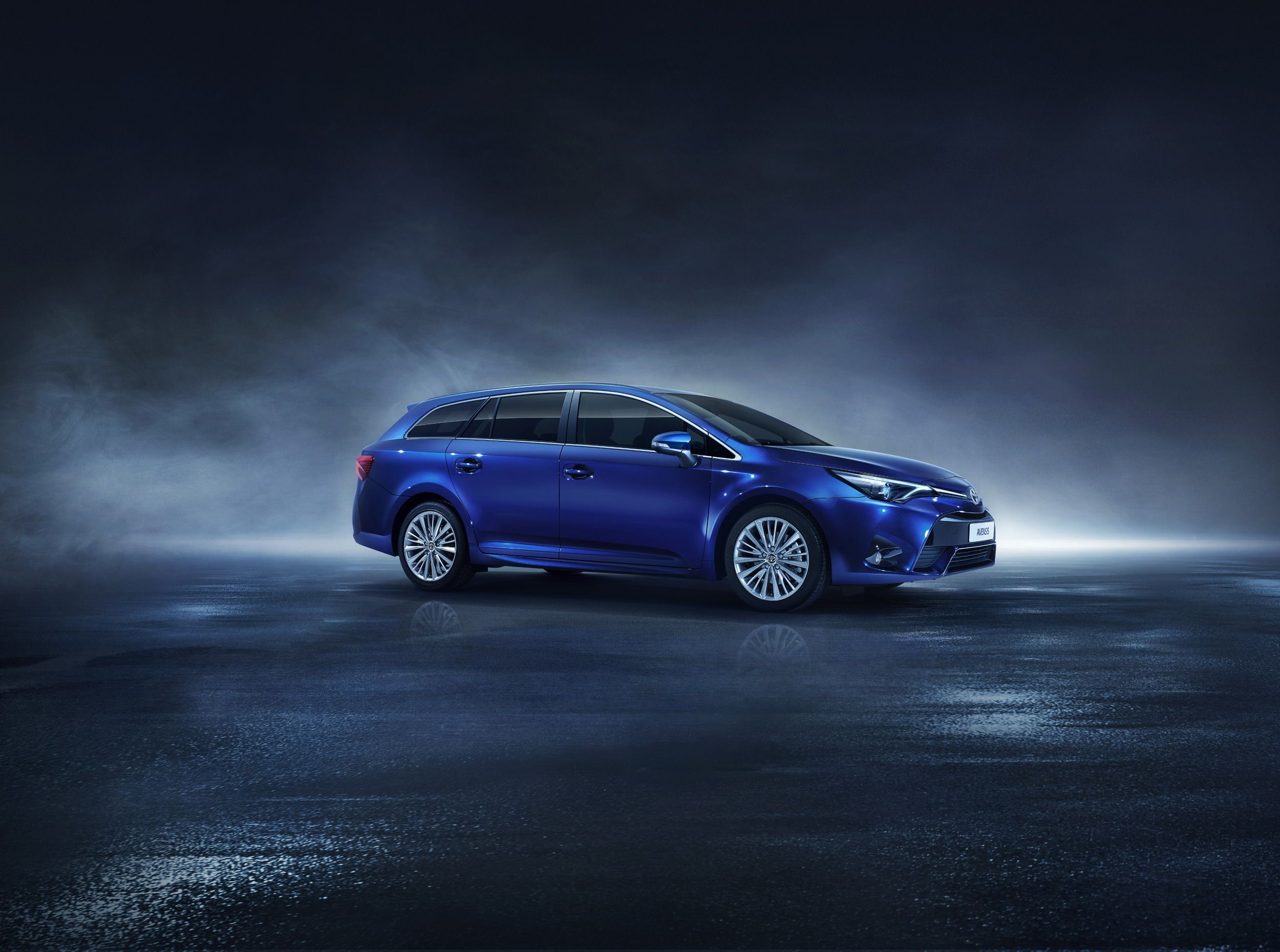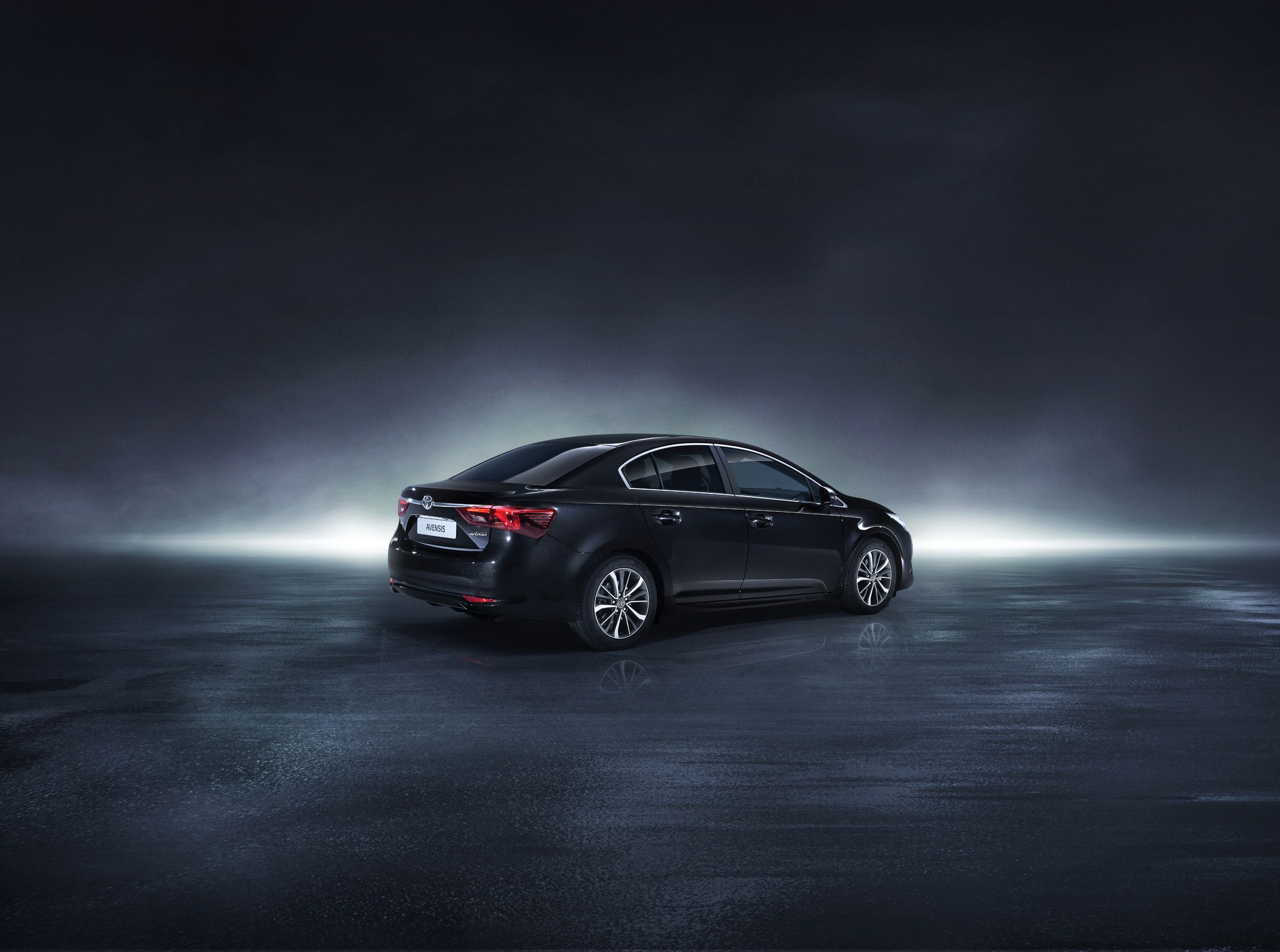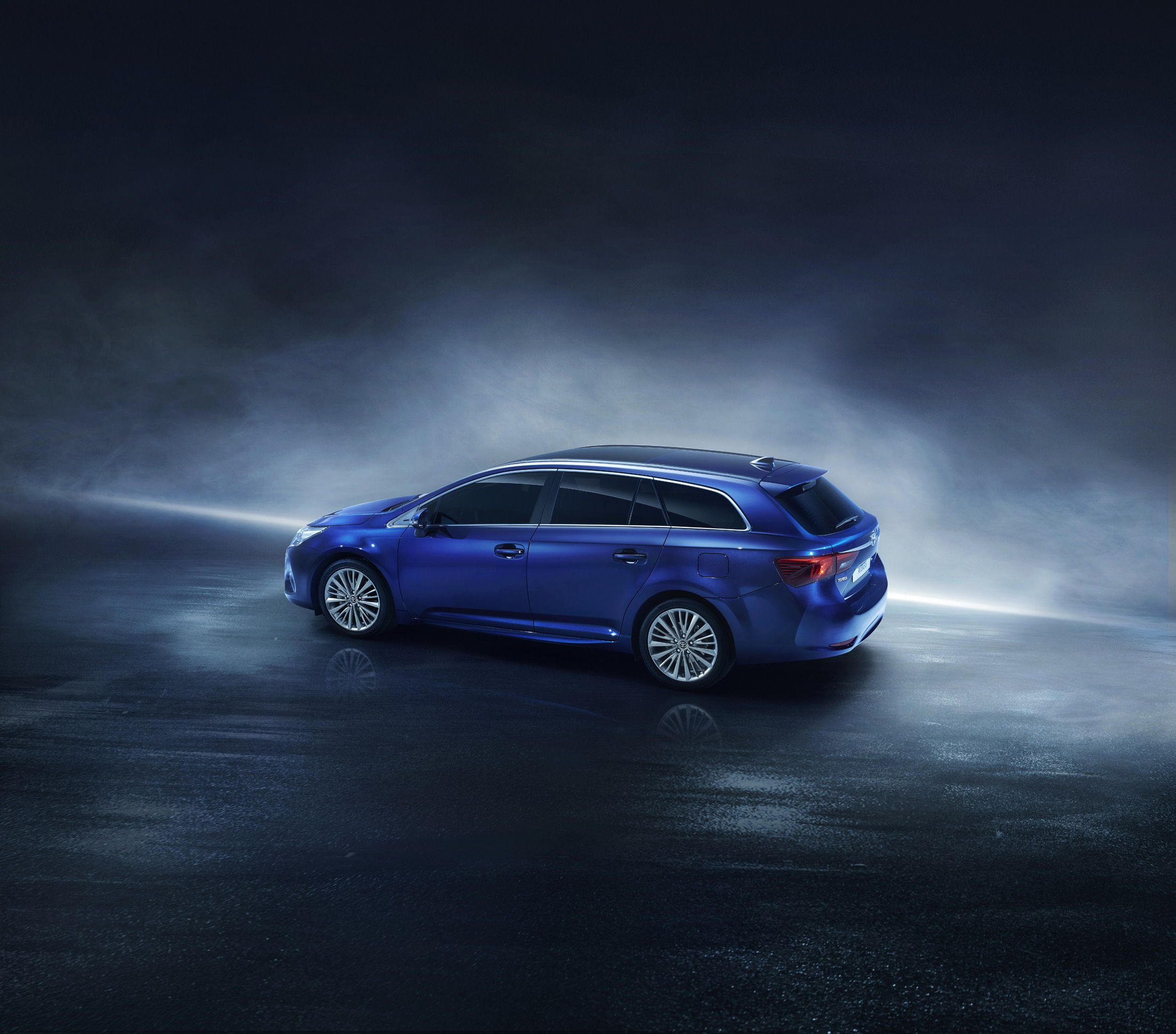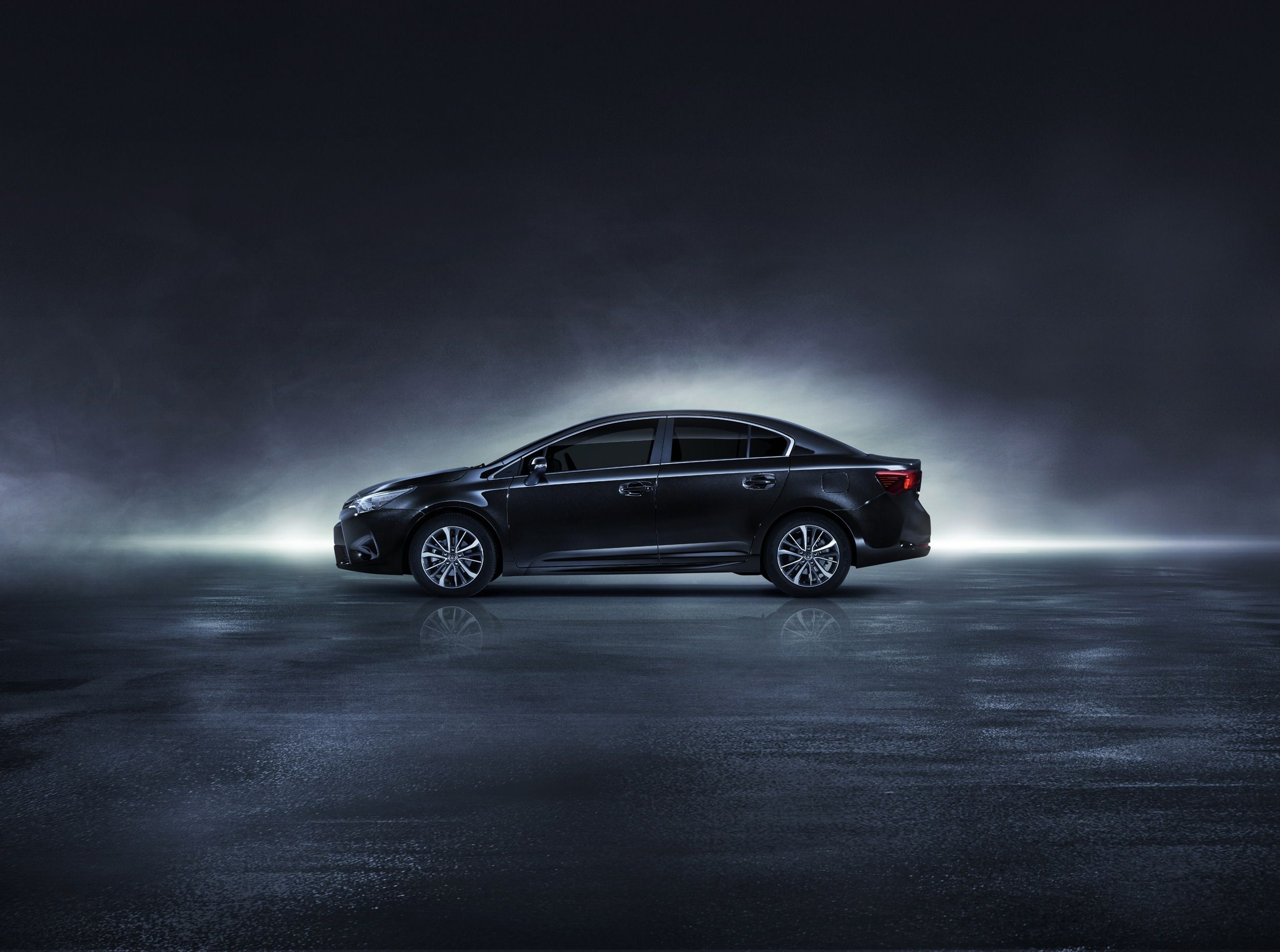Toyota->ke88 launched the Avensis->ke1529 in 1997 as a replacement for the Carina E. Although the first-gen sedan was largely a revamped Carina with new styling, the Avensis proved a sales success for Toyota Europe. Redesigned in 2003 and again in 2009, the Avensis grew in size and advanced in terms of technology, power, and fuel economy, ultimately becoming a strong competitor for the likes of the Ford Mondeo,->ke1709 Mazda 6 and the Volkswagen Passat. At the 2015 Geneva Motor Show, Toyota launched the fourth-generation Avensis, a significantly improved iteration built on the same MC platform.
Redesigned to mirror the recent updates of the Corolla->ke1039 and Camry->ke246 sedans, the new Avensis boasts a more modern and youthful appearance in the wake of Ford->ke31 and Mazda->ke53 launching redesigned mid-size sedans of their own in Europe. The drivetrain lineup is as diverse as it ever was, consisting of both gasoline and diesel engines, as well as manual and CTV transmissions. The revamp also brings noteworthy improvements in output and fuel economy, as well as a number of new creature comforts and tech features.
Continue reading to learn more about the 2015 Toyota Avensis.
2015 Toyota Avensis
- Make: Array
- Model: 2015 Toyota Avensis
- Engine/Motor: inline-4
- Horsepower: 130
- Torque: 118
- Transmission: 6-speed manual
Exterior
align=right>
The new front fascia is both sleeker and more aggressive, sporting slim headlamps and grille similar to those on the smaller Corolla. Combined, the chrome trim on the grille and the LED daytime running lights incorporated into the headlamps give the new Avensis an individual illumination signature that sets it apart from other Toyotas. Down below, the apron carries a trapezoidal center section flanked by fog lamps mounted in large black surrounds.
But while the front end reminds me of the Corolla, the rear fascia is different, featuring larger taillights, a distinctive trunk lid, and chrome detailing that incorporates the Toyota emblem. As with most Toyota sedans, the rear bumper is rather simple. Viewed from the side, the new Avensis is only a mild evolution of its predecessor, mostly because Toyota didn't change much above the wheelbase, as the greenhouse area, the side skirts, and the fenders are similar to the third-gen sedan. However, there's a seemingly more-pronounced waistline, a trunk lid spoiler, and redesigned wheels to count as fresh additions.
The new Avensis exudes more elegance and sportiness, two features sedan buyers will most likely appreciate. Additionally, the new LED technology gives it a more premium look, which might prove important in a segment that includes the Ford Fusion and the Mazda 6.
Overall length (mm)
Hatchback 4,750 (187.00 Inches) Overall width (mm)
Hatchback 1,810 (71.25 Inches) Overall height (mm)
Hatchback 1,480 (inc. roof rails) (58.26 Inches) Wheelbase (mm)
Hatchback 2,700 (106.29 Inches) Updates are significant inside the cabin as well, where Toyota redesigned both the dashboard and the center stack, and added modern technology and features. The instrument cluster feels sportier thanks to its tubed gauges and 4.2-inch TFT screen, while the center stack, which incorporates an 8-inch color touchscreen, is now separate from the transmission tunnel. The steering wheel and gear lever are also new, as are the bolstered front seats, which look more comfortable for long-distance travel.
The satin chrome inserts and the new interior finishes, including Alcantara seat upholstery or the Dual Ambient color scheme with either Terracotta or Light Grey, give the Avensis' cabin a higher quality appearance. Higher trim levels receive smart entry, leather upholstery and Toyota Touch 2 with Go Plus and satellite navigation. An optional premium pack adds power-adjustable front seats with memory and a Skyview panoramic roof.
NVH levels have been significantly reduced by thicker materials for sound absorption and insulation, and an underbody damping sheet on diesel models.
align=right>
The fourth-generation Avensis comes with a choice of five, four-cylinder engines, which as with most Euro-spec cars, includes a couple of diesels. The gasoline range begins with the 1.6-liter rated at 130 horsepower and 118 pound-feet of torque. The unit mates to a six-speed manual and returns a 0-to-62 sprint of 10.4 seconds and a top speed of 124 mph. More power comes from the 1.8-liter unit, which cranks out 145 horsepower and 132 pound-feet through either a six-speed manual or a CVT. The 62-mph sprint takes 9.4 seconds with the manual and 10.4 ticks with the CVT, on the way to 124 mph. Lastly, the range-topping 2.0-liter engine churns 150 horses and 144 pound-feet and uses a CVT to push the sedan to 62 mph in 10 seconds flat and up to a top speed of 127 mph.
Moving over to diesels, Toyota offers 1.6- and 2.0-liter engines with six-speed manuals only. The 1.6 delivers 110 horsepower and 199 pound-feet of torque, and enables the Avensis to hit 62 mph in 11.4 seconds before topping out at 112 mph. The 2.0, on the other hand, generates 141 horsepower and 236 pound-feet and rivals the range-topping gasoline mill performance-wise, with a 0-to-62 mph sprint of 9.5 seconds and a top speed of 124 mph.
Toyota promises improved fuel economy and reduced carbon-dioxide emissions across the board.
Type
Four cylinders in-line
Four cylinders in-line
Four cylinders in-line
Four cylinders in-line
Four cylinders in-line
Valve mechanism
DOHC 16-valve with Dual VVT-i
DOHC 16-valve with Dual VVT-i
DOHC 16-valve with Dual VVT-i
DOHC 16-valve
DOHC 16-valve
Displacement (cc)
1,598
1,798
1,987
1,598
1,998
Max power (hp @ rpm)
130 @ 6,400
145 @ 6,400
150 @ 6,200
110 @4,000
141 @ 4,000
Max torque (lb-ft @ rpm)
118 LB-FT @ 4,400
132 @ 4,000
144 @ 4,000
199 @ 1,750 – 2,250
236 @ 1,750 – 2,250
Transmission
6MT
6MT or Multidrive S CVT
Multidrive S CVT
6MT
6MT
Max. speed (mph)
124
124
127
112
124
Acceleration 0 – 62mph (sec)
10.4
9.4 – manual10.4 – Multidrive S
10.0
11.4
9.5
Pricing for the new Avensis is not yet available, but expect the sedan to receive a £1,000 (around $1,500) premium over the current £17,700 ($27,000 as of 03/05/2014) sticker in the UK.
The Mondeo is the European version of the U.S.-spec Fusion and likely the main reason why the Avensis has advanced in size, technology, power, and fuel economy since its introduction in 1997. The Mondeo is also available with no fewer than five engine options, including both gasoline and diesel choices. There's a 1.0-liter EcoBoost delivering 123 horsepower, a 1.5-liter EcoBoost that produces 158 horses, and a 2.0-liter EcoBoost rated at an impressive 237 horsepower.
On the diesel front, there will be an entry-level 1.5-liter TDCi and a larger 2.0 TDCi in three power outputs, with the most powerful churning 207 horsepower due to twin turbos. The diesels will become available later in 2015 in Europe, where the two-year-old, second-generation Fusion has just been introduced as a brand-new Mondeo. Pricing starts from £20,795 (about $31,700).
Featuring Mazda's "Soul of Motion" design language, the Mazda 6 is arguably one of the better-looking sedans of the midsize segment. The Euro-spec Mazda 6 comes with a choice of three powerful, yet fuel-efficient engines with SkyActiv technology, mated to either six-speed manual or six-speed automatic transmissions. The gasoline lineup begins with a 2.0-liter four-cylinder rated at either 145 or 165 horsepower, while the range-topping model is motivated by a 2.5-liter four-cylinder making 192 horsepower.
Diesel offerings include a 2.2-liter SkiActiv-D unit churning out either 150 or 175 horses and returning the equivalent of up to 56 mpg combined. The Mazda 6 Wagon retails from ££19,795, which converts to $30,200 as of 02/17/2015, in the United Kingdom.
With the European large family car market no longer dominated by spacious and reliable but forgettable cars, Toyota was basically forced to up the ante in the styling department. It did so with the third-generation Avensis, which no longer looks like only grandpa would buy it, but takes things up a notch with the latest iteration of the sedan. The styling is fresh, the interior has that premium feel drivers are looking for nowadays, and the engine lineup is as diverse as it gets. If Toyota manages to keep the Avensis' price down despite these massive changes, it could have a winner on its hands.
Exterior Dimensions
Touring Sports 4,820 (189.76 Inches)
Touring Sports 1,810 (71.25 Inches)
Touring Sports 1,480 (inc. roof rails) (58.26 Inches)
Touring Sports 2,700 (106.29 Inches)
Interior
Drivetrain
Drivetrain Specifications
Prices
Competition
Ford Mondeo
Mazda 6
Conclusion

